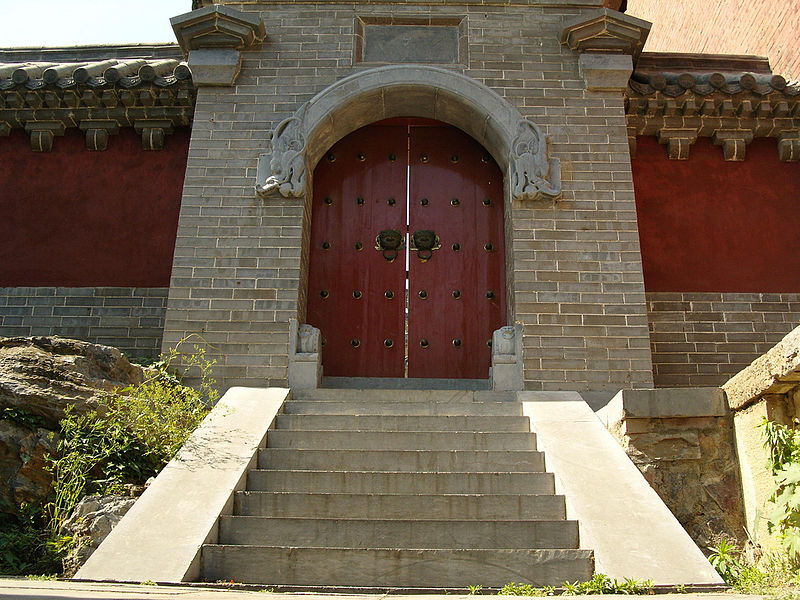





 |
 |
 |
 |
 |
 |
|---|---|---|---|---|---|
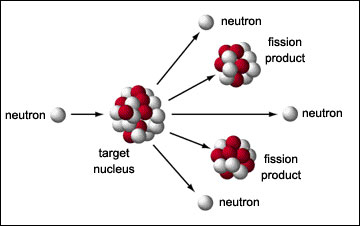 |
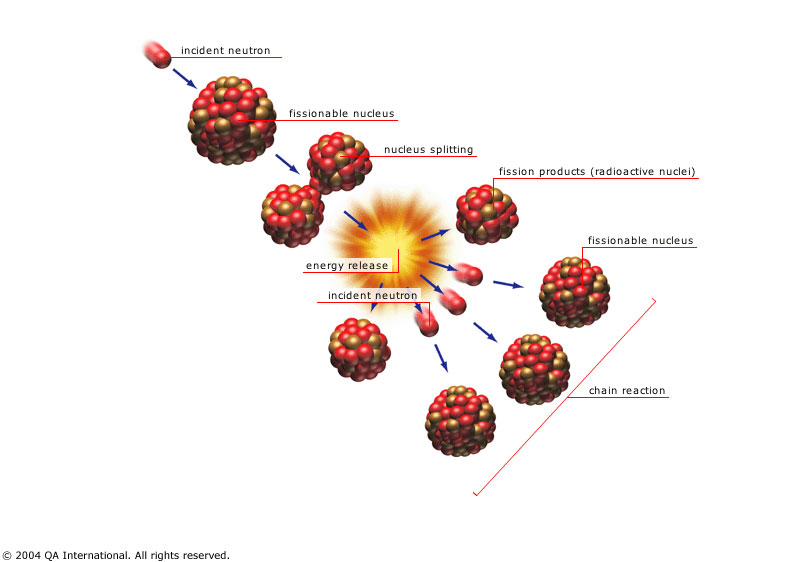 |
|---|---|
A neutron triggers the fission of Uranium-235 and plutonium-239,
releasing energy and more neutrons. The released neutrons trigger further
fission.
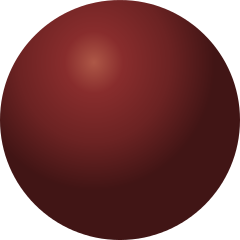 |
 |
 |
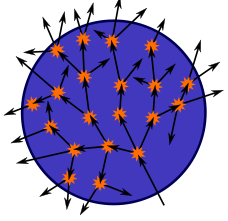 |
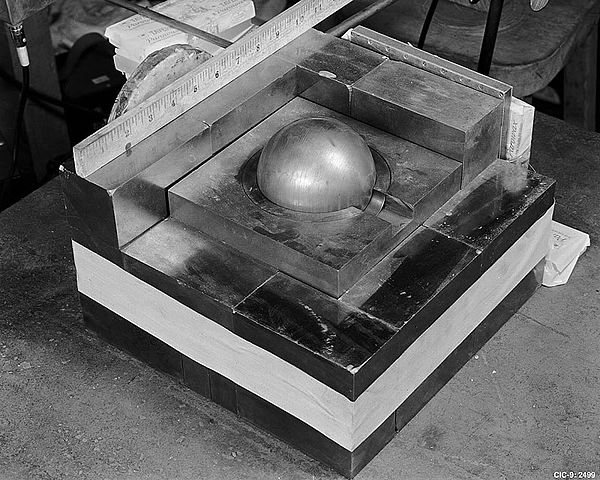 |
|---|---|---|---|---|
|
|
|
|
|
|
A fission of uranium-235 releases on average 1.86 neutrons, some of which trigger fission in nearby nuclei and some of which escape without triggering fission. If a sphere of uranium-235 is small then most of the neutrons escape before triggering fission and the sphere doesn't blow up. If the sphere is large then most of the neutrons trigger more fission, a chain reaction occurs and the sphere blows up. The threshold for a chain reaction is the "critical mass".
The nuclei that are capable of undergoing a chain reaction are:
Protons Neutrons Critical Halflife Neutrons per
mass (kg) (106 yr) fission
Uranium-233 92 141 16 .160 2.48
Uranium-235 92 143 52 700 1.86
Plutonium-239 94 145 10 .024 2.16
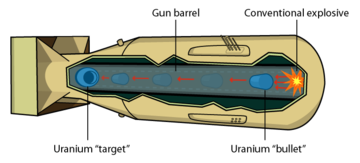 |
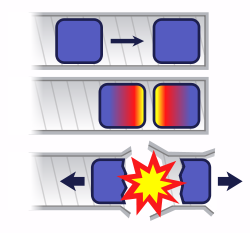 |
|---|---|
If you bring two pieces of uranium-235 together too slowly, a chain reaction begins in the near side of each piece, generates heat, and blows the two pieces apart before they can come completely together. Only a small amount of uranium undergoes fission and this is referred to as a "fizzle". Using gunpowder and a cannon is fast enough to properly detonate uranium and this is technologically easy to do.
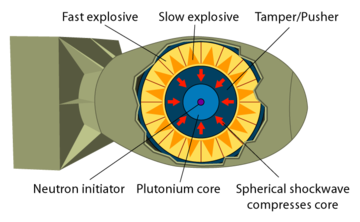 |
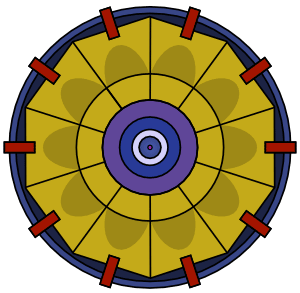 |
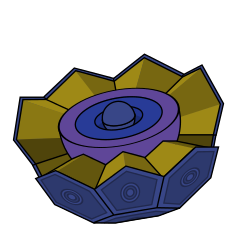 |
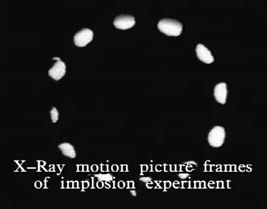 |
|---|---|---|---|
Plutonium is more difficult to detonate than uranium. Simply bringing two pieces together, no matter how fast, results in a fizzle. To detonate plutonium you have to shape it as a sphere and implode it, which is technologically difficult.
In World War 2 the U.S. produced enough uranium for 1 bomb and enough plutonium for 2 bombs. One of the plutonium bombs was tested in the "Trinity" test before being used in the war, and the second bomb was dropped on Nagasaki. The uranium bomb was dropped on Hiroshima without previously being tested.
When Hans Bethe, a physicist on the Manhattan project, was asked why they didn't test the uranium bomb he replied "Because we were perfectly sure it would work".
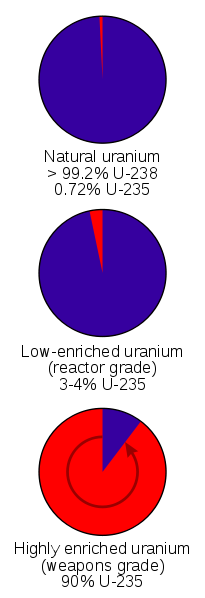 |
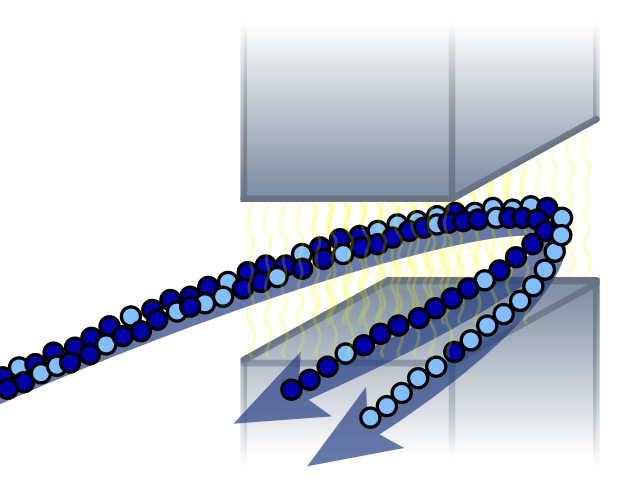 |
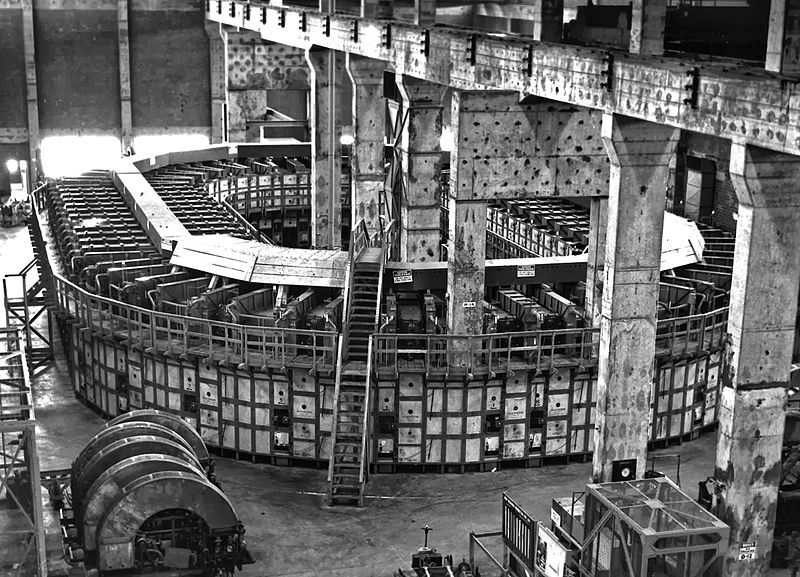 |
|---|---|---|
Natural Uranium is .72% Uranium-235 and 99.3% Uranium-238. Only Uranium-235 undergoes a chain reaction and so it has to be separated from the Uranium-238. Several methods exist for doing this. In World War 2 the isotopes were separated magnetically with calutrons. Gas diffusion and centrifuges can also be used.
 |
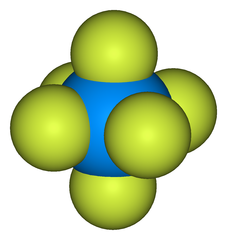 |
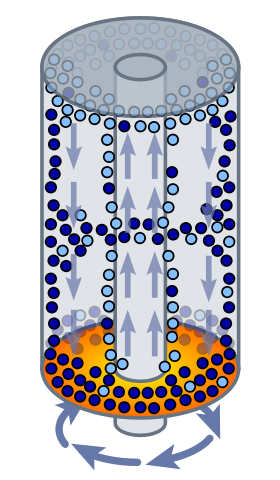 |
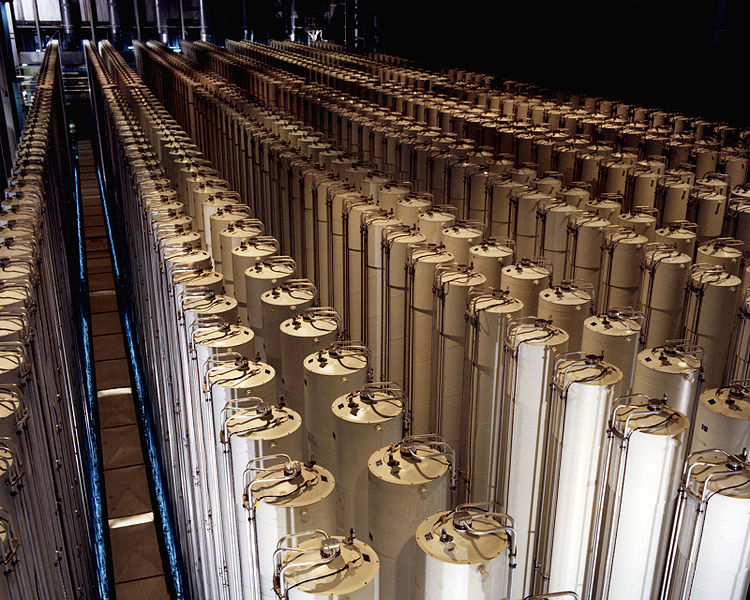 |
|---|---|---|---|
Uranium is converted to gas form by forming uranium hexafluoride (HF6). HF6 is a gas above 64 Celsius. In a centrifuge, the lighter uranium-235 concentrates at the center and the heavier uranium-238 concentrates at the edge.
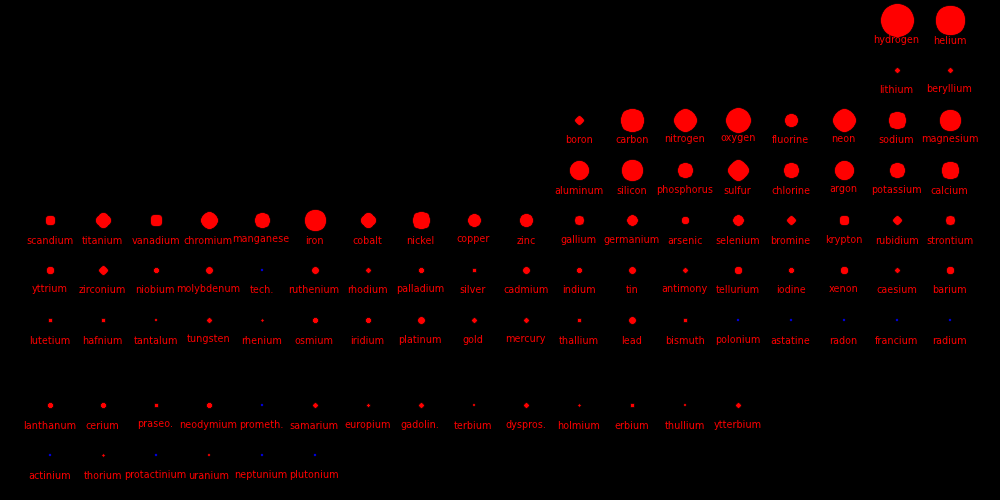 |
|---|
Blue elements are unstable with a half life much less than the age of the solar system and don't exist in nature.
The only elements heavier than Bismuth that can be found on the Earth are Thorium and Uranium, and these are the only elements that can be tapped for fission energy.
Natural thorium is 100% Thorium-232
Natural uranium is .7% Uranium-235 and the rest is Uranium-238.
Plutonium has a short half life and doesn't exist in nature. It can be created by subjecting uranium-238 to neutrons in a nuclear reactor. Fissionable uranium-233 can be created from thorium-232.
Uranium-238 + Neutron → Plutonium-239 Thorium-232 + Neutron → Uranium-233 Detail: Uranium-238 + Neutron → Uranium-239 Uranium-239 → Neptunium-239 + Electron + Antineutrino Halflife = 23 minutes Neptunium-239 → Plutonium-239 + Electron + Antineutrino Halflife = 2.4 days Thorium-232 + Neutron → Thorium-233 Thorium-233 → Protactinium-233 + Electron + Antineutrino Halflife = 22 minutes Protactinium-233 → Uranium-233 + Electron + Antineutrino Halflife = 27.0 days
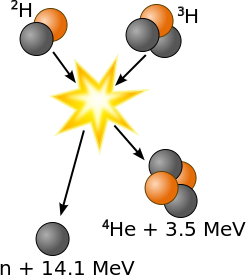 |
|
|---|---|
Fusion bombs use the reactions:
Neutron + Lithium6 → Tritium + Helium4 + 4.874 MeV Deuterium + Tritium → Helium4 + Neutron + 17.56 MeVLeaving out the neutron catalyst, this is
Deuterium + Lithium6 → Helium4 + Helium4 + 22.43 MeV
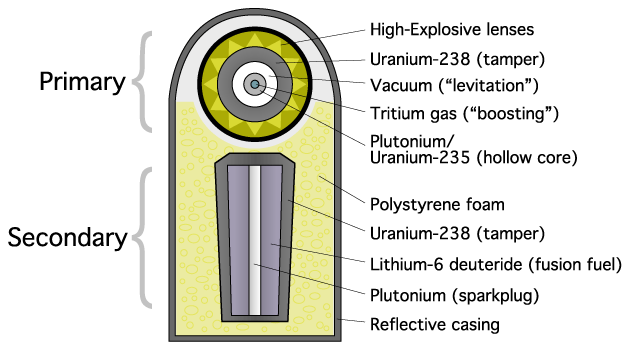 |
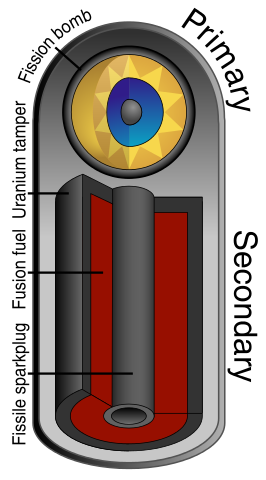 |
|---|---|
Fusion of deuterium and lithium requires high temperature and pressure, which is achieved by compressing the fuel. This is done by detonating a fission bomb and using the generated X-rays to compress the fusion fuel. X-rays strike the outer layer and expel atoms, and the recoil compresses the fuel. This is called "ablation" and the design was developed by Teller and Ulam.
X-ray Plasma Ablation
pressure pressure pressure
TPa TPa TPa
Ivy Mike 7.3 35 530
W-80 140 750 6400
-LLNL.jpg) |
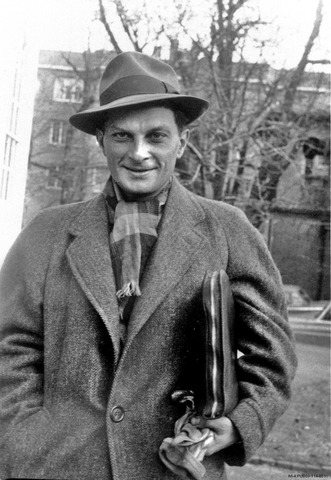 |
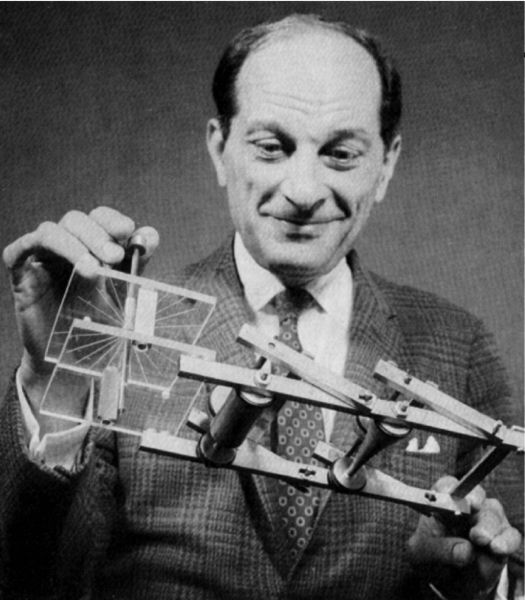 |
|---|---|---|
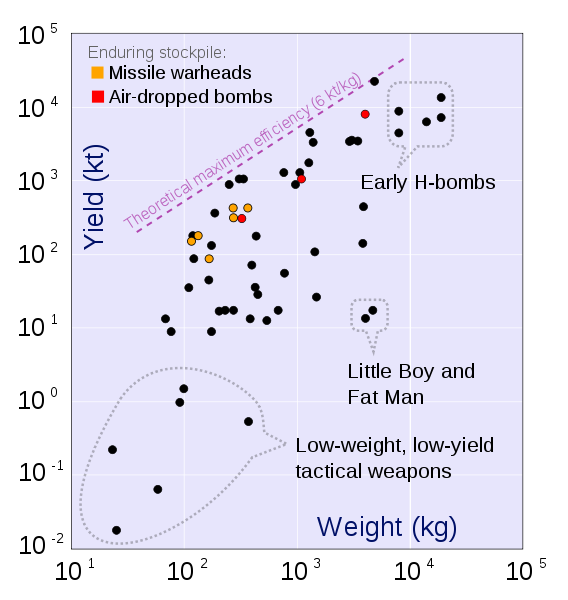 |
 |
|---|---|
The practical limit for the energy/mass of a fusion bomb = 25 TJoules/kg or .0062 Mtons of TNT per kg.
1 ton of TNT = 4⋅109 Joules 1 ton of gasoline = 4⋅1010 Joules Massive Ordnance Air Blast bomb = .000011 MTons TNT (Largest U.S. conventional bomb) Trinity plutonium-239 test = .020 MTons TNT Hiroshima uranium-235 fission bomb = .015 MTons TNT "Little Boy". 60 kg Uranium-235 Nagasaki plutonium-239 fission bomb = .021 MTons TNT "Fat Man". 6 kg Plutonium-239 Ivy King fission bomb = .5 MTons TNT Largest pure fission bomb B83 fusion bomb = 1.2 MTons TNT Largest bomb in active service Castle Bravo fusion bomb = 15 MTons TNT Largest U.S. test B41 fusion bomb = 25 MTons TNT Largest U.S. bomb created Tsar Bomba = 50 MTons TNT Largest USSR test
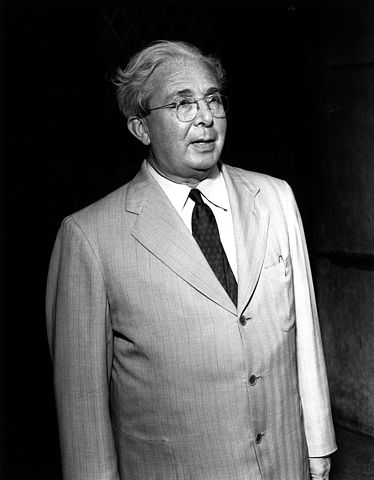 |
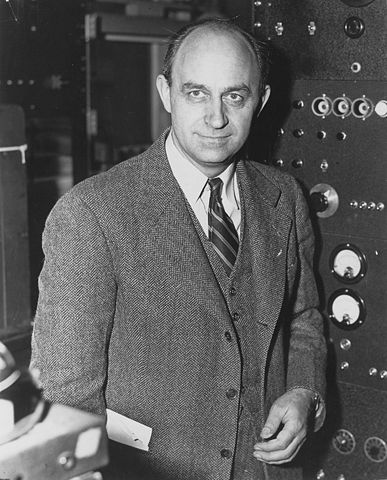 |
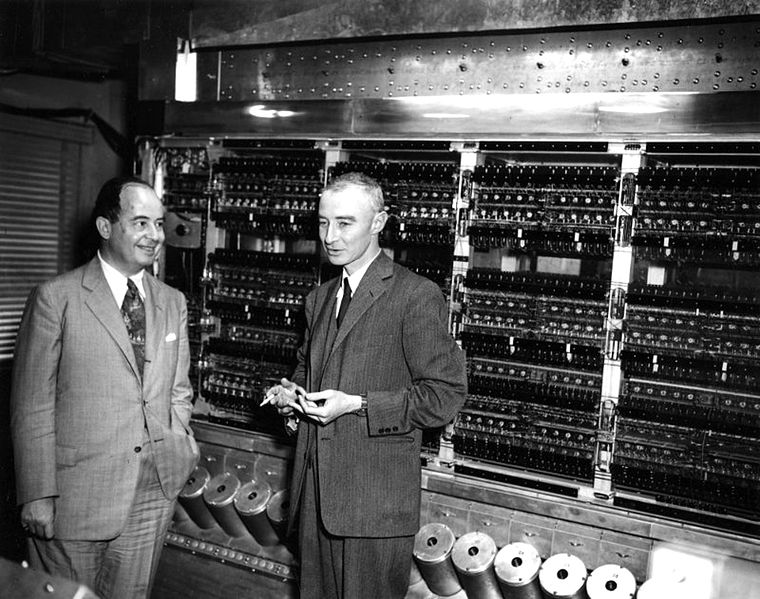 |
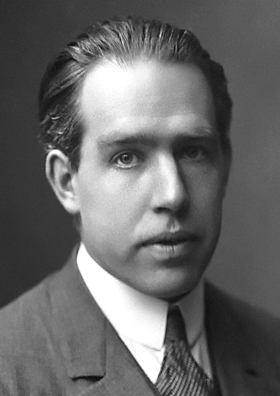 |
|---|---|---|---|
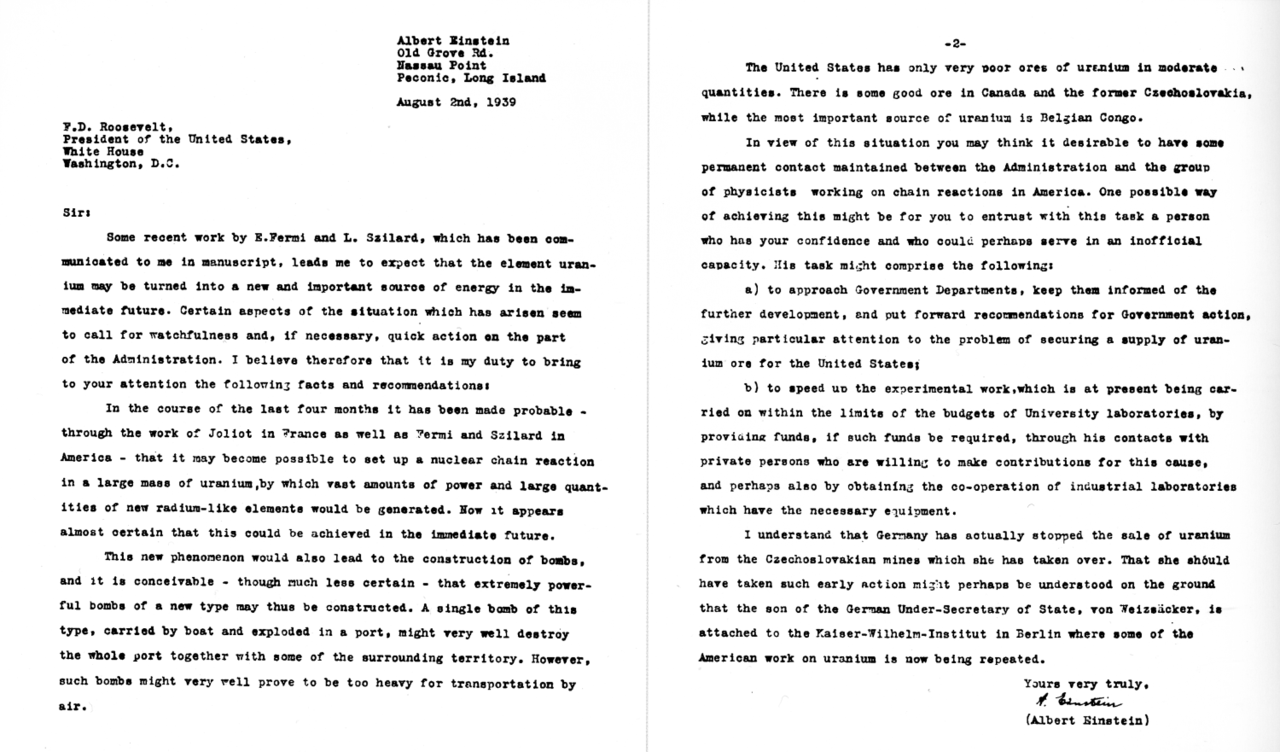 |
|---|
1885 Rontgen discovers X-rays
1899 Rutherford discovers alpha and beta rays
1903 Rutherford discovers gamma rays
1905 Einstein discovers that E=mc2. Matter is equivalent to energy
1909 Nucleus discovered by the Rutherford scattering experiment
1932 Neutron discovered
1933 Nuclear fission chain reaction envisioned by Szilard
1934 Fermi bombards uranium with neutrons and creates Plutonium
1938 Dec19 Hahn and Strassmann discover uranium fission
1939 Jan 6 Hahn and Strassmann publish uranium fission
1939 Jan25 Fermi begins conducting nuclear fission experiments at Columbia University
1939 Jan26 Bohr and Fermi report on uranium fission at the Washington Conference
on theoretical physics
1939 Szilard and Zinn discover that bombarding uranium with neutrons produces
new neutrons.
1939 Jul 4 Szilard, Wigner, and Einstein discuss nuclear fission
1939 Aug 2 Szilard, Teller, and Einstein discuss nuclear fission. Szilard drafts
the the "Einstein letter" that is later delivered to President Roosevelt
1939 Oct11 Alexander Sachs briefs President Roosevelt on Einstein's letter.
1939 Oct12 Alexander Sachs meets again with President Roosevelt and this time
Roosevelt gives the order to commence the development of a nuclear bomb.
1942 Dec 2 Fermi and Szilard achieve the first self-sustaining nuclear fission
reactor at the University of Chicago
1942 Aug Manhattan project commences
1942-1945 German nuclear bomb project goes nowhere
1945 Jul16 Trinity test of a plutonium bomb yields a 20 kTon TNT equivalent explosion
1945 Aug 6 A uranium bomb is deployed at Hiroshima, yielding 15 kTons TNT equivalent
1945 Aug 9 A plutonium bomb is deployed at Nagasaki, yielding 21 kTons TNT equivalent
Hans Bethe, a physicist on the Manhattan Project, was asked why the uranium type
bomb was not tested before deployment and he replied "Because we were perfectly sure
it would work".
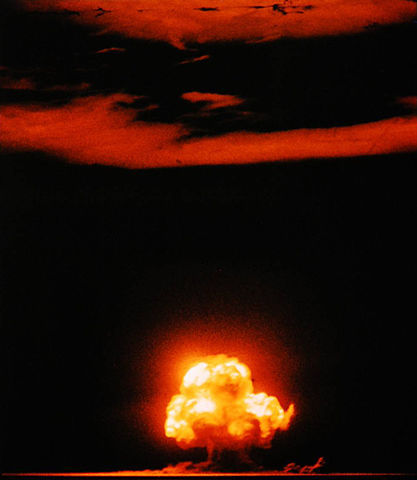 |
 |
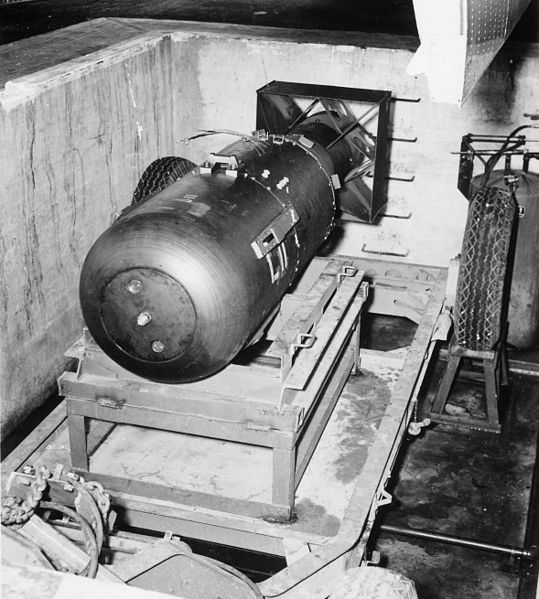 |
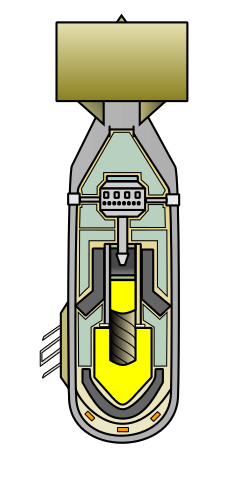 |
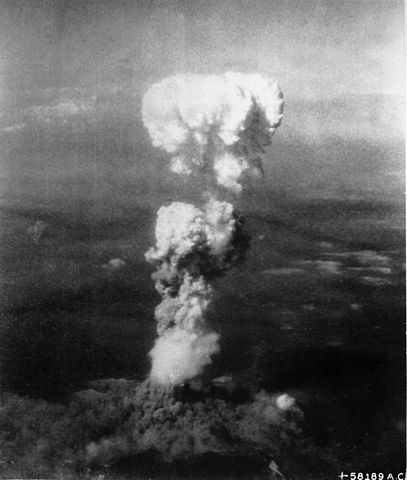 |
|---|---|---|---|---|
.jpg) |
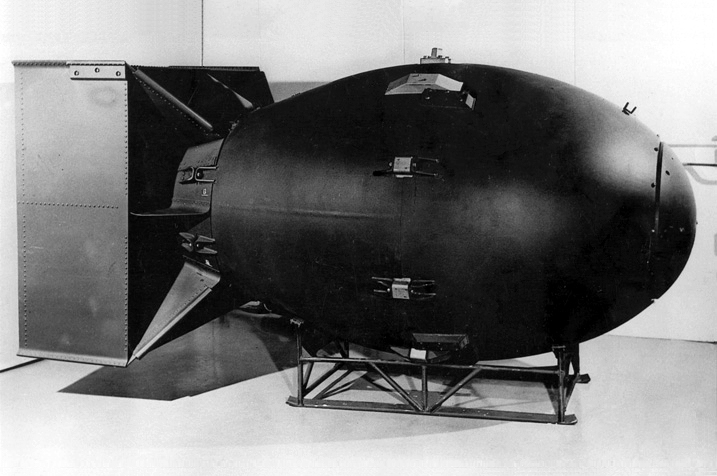 |
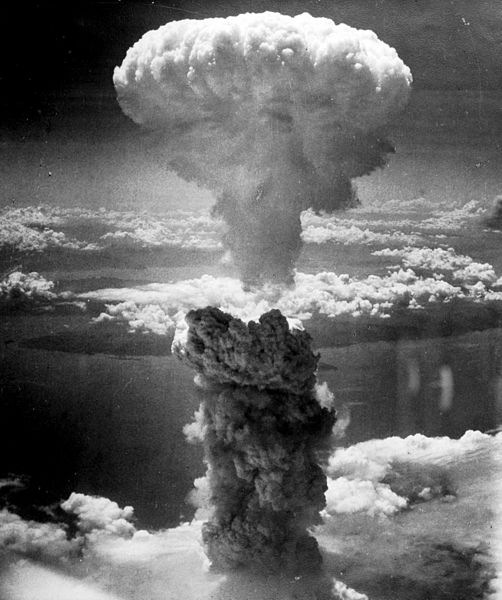 |
|---|---|---|
All of the radioactive fission products decay by beta decay.
If the neutron cross section is 8 barnes or higher then the nucleus can potentially be transmuted into a nonradioactive nucleus.
Strontium-90 is ideal for Radioisotope Thermoelectric Generators (RTGs).
The most troublesome fission products are the ones that can't be transmuted. Chief among these are Caesium-137, Zirconium-93, Niobium-94, Strontium-90, Zirconium-91, and Palladium-107.
Curtis LeMay: Flying fighters is fun. Flying bombers is important.
LeMay received a degree in civil engineering from Ohio State University.
Robert McNamara described LeMay's character, in a discussion
of a report into high abort rates in bomber missions during World War II:
"One of the commanders was Curtis LeMay, a Colonel in command of a B-24
group. He was the finest combat commander of any service I came across
in war. He said, 'I will be in the lead plane on
every mission. Any plane that takes off will go over the target,
or the crew will be court-martialed.' The abort rate dropped overnight.
Now that's the kind of commander he was."
When his crews were not flying missions, they were subjected to
relentless training, as he believed that training was the key
to saving their lives. Throughout his career, LeMay was widely
and fondly known among his troops as "Old Iron Pants"
and the "Big Cigar". LeMay once said: "Flying fighters is fun.
Flying bombers is important."
In 1951, Gen. Curtis Lemay appointed Emilio "Mel" Bruno,
his Judo teacher and a former national American Athletic
Union Wrestling champion and fifth degree black belt in Judo,
to direct a command-wide Judo and combative measures program.
Curtis LeMay is credited with designing and implementing an effective
bombing campaign in the Pacific theater of World War II, including
a crippling minelaying campaign in Japan's
internal waterways. The war was effectively over long before the nuclear
strike because of the success of the naval blockade.
LeMay piloted one of three specially modified B-29s
flying from Japan to the U.S. in September 1945,
in the process breaking several aviation records at that date,
including the greatest USAAF takeoff weight, the longest
USAAF non-stop flight, and the first ever non-stop Japan-Chicago flight.
One of the pilots was of higher rank:
Lieutenant General Barney M. Giles. The other two aircraft used up
more fuel than LeMay's in fighting headwinds, and they could not
fly to Washington, D.C., the original goal. Their pilots decided
to land in Chicago to refuel. LeMay's aircraft had sufficient fuel
to reach Washington, but he was directed by the War Department
to join the others by refueling at Chicago. The order was ostensibly
given because of borderline weather conditions in Washington,
but according to First Lieutenant Ivan J. Potts who was on board,
the order came because LeMay had one fewer general's stars and should
not be seen to outperform his superior.
In 1947, he returned to Europe as commander of USAF Europe, heading
operations for the Berlin Airlift in 1948 in the face of a blockade by
the Soviet Union and its satellite states that threatened to starve the
civilian population of the Western occupation zones of Berlin.
Under LeMay's direction, Douglas C-54 Skymasters that could each carry
10 tons of cargo began supplying the city on July 1.
By the fall, the airlift was bringing in an average of 5,000 tons of
supplies a day with 500 daily flights. The airlift continued for
11 months (213000 flights) that brought in 1.7 million tons of food and fuel
to Berlin. Faced with the failure of its blockade, the Soviet Union
relented and reopened land corridors to the West. Though LeMay is
sometimes publicly credited with the success of the Berlin Airlift,
it was, in fact, instigated by General Lucius D. Clay when General Clay
called LeMay about the problem. LeMay initially started flying supplies
into Berlin, but then decided that it was a job for a logistics expert
and he found that person in Lt. General William H. Tunner, who took over
the operational end of the Berlin Airlift.
In 1948, he returned to the U.S. to head the Strategic Air Command (SAC).
When LeMay took over
command of SAC, it consisted of little more than a few understaffed B-29
bombardment groups left over from World War II. Less than half of the
available aircraft were operational, and the crews were undertrained.
Base and aircraft security standards were minimal. Upon inspecting a
SAC hangar full of US nuclear strategic bombers, LeMay found a single
Air Force sentry on duty, unarmed. After ordering a mock bombing exercise
on Dayton, Ohio, LeMay was shocked to learn that most of the strategic
bombers assigned to the mission missed their targets by one mile or more.
"We didn't have one crew, not one crew, in the entire command who could
do a professional job" noted LeMay.
A meeting in November, 1948 with Air Force Chief of Staff, Hoyt Vandenberg,
found the two men agreeing the primary mission of SAC should be the
capability of delivering 80% of the nation's atomic bombs in one mission.
Towards this aim, LeMay delivered the first SAC Emergency War Plan in
March 1949 which called for dropping 133 atomic bombs on 70 cities in
the USSR within 30 days. Air power strategists called this type of
pre-emptive strike, "killing a nation." However, the Harmon committee,
released their unanimous report two months later stating such an
attack would not end a war with the Soviets and their industry would
quickly recover. This committee had been specifically created by the
Joint Chiefs of Staff to study the effects of a massive nuclear strike
against the Soviet Union. Nevertheless, within weeks, an ad hoc
Joint Chiefs committee recommended tripling America's nuclear arsenal,
and Chief of Staff Vandenberg called for enough bombs to attack 220 targets,
up from the previous 70.
Upon receiving his fourth star in 1951 at age 44, LeMay became the
youngest four-star general in American history since Ulysses S. Grant
and was the youngest four-star general in modern history as well as
the longest serving in that rank. In 1956 and 1957 LeMay implemented
tests of 24-hour bomber and tanker alerts, keeping some bomber
forces ready at all times. LeMay headed SAC until 1957, overseeing
its transformation into a modern, efficient, all-jet force.
LeMay's tenure was the longest over an American military
command in nearly 100 years.
General LeMay was instrumental in SAC's acquisition of a large fleet
of new strategic bombers, establishment of a vast aerial
refueling system, the formation of many new units and bases,
development of a strategic ballistic missile force, and establishment
of a strict command and control system with an unprecedented readiness
capability. All of this was protected by a greatly enhanced and modernized
security force, the Strategic Air Command Elite Guard. LeMay insisted on
rigorous training and very high standards of performance for all
SAC personnel, be they officers, enlisted men, aircrews, mechanics,
or administrative staff, and reportedly commented,
"I have neither the time nor the inclination to differentiate between
the incompetent and the merely unfortunate."
A famous legend often used by SAC flight crews to illustrate LeMay's
command style concerned his famous ever-present cigar.
LeMay once took the co-pilot's seat
of a SAC bomber to observe the mission, complete with lit cigar.
When asked by the pilot to put the cigar out, LeMay demanded to know why.
When the pilot explained that fumes inside the fuselage could ignite
the airplane, LeMay reportedly growled, "It wouldn't dare."
Despite his uncompromising attitude regarding performance of duty,
LeMay was also known for his concern for the physical well-being and
comfort of his men. LeMay found ways to encourage morale, individual
performance, and the reenlistment rate through a number of means:
encouraging off-duty group recreational activities, instituting spot
promotions based on performance, and authorizing special uniforms,
training, equipment, and allowances for ground personnel
as well as flight crews.
On LeMay's departure, SAC was composed of 224,000 airmen,
close to 2,000 heavy bombers, and nearly 800 tanker aircraft.
LeMay was appointed Vice Chief of Staff of the United States Air Force
in July 1957, serving until 1961.
He advocated the introduction of satellite technology and pushed
for the development of the latest electronic warfare techniques.
The memorandum from LeMay, Chief of Staff, USAF, to the Joint Chiefs of Staff,
January 4, 1964, illustrates LeMay's reasons for keeping bomber forces
alongside ballistic missiles: "It is important to recognize, however,
that ballistic missile forces represent both the U.S. and Soviet
potential for strategic nuclear warfare at the highest, most indiscriminate
level, and at a level least susceptible to control. The employment of
these weapons in lower level conflict would be likely to escalate the
situation, uncontrollably, to an intensity which could be vastly
disproportionate to the original aggravation. The use of ICBMs and SLBMs
is not, therefore, a rational or credible response to provocations which,
although serious, are still less than an immediate threat to national
survival. For this reason, among others, I consider that the national
security will continue to require the flexibility, responsiveness,
and discrimination of manned strategic weapon systems throughout the
range of cold, limited, and general war."
LeMay was a Heathkit customer and active amateur radio operator.
He was famous for being on the air on amateur
bands while flying on board SAC bombers. LeMay became aware that
the new single sideband (SSB) technology offered a big advantage
over amplitude modulation (AM) for SAC aircraft operating long
distances from their bases. In conjunction with Heath engineers
and Art Collins, he established
SSB as the radio standard for SAC bombers in 1957.
LeMay was also a sports car owner and enthusiast (he owned an Allard J2).
LeMay loaned out facilities of
SAC bases for use by the Sports Car Club of America. He was awarded the
Woolf Barnato Award, SCCA's highest award, for contributions to
the Club, in 1954. In November 2006, it was announced that
General LeMay would be one of the inductees into the SCCA Hall of Fame in 2007.
The dumbasses: The Press
LeMay enthusiastically supported racial integration in the
U.S. military publicly and privately.
In 1968 LeMay was the running mate to George Wallace in the presidential
election, and he was dismayed to find himself attacked in the
press as a racial segregationist because he was running with Wallace;
he had never considered himself a bigot.
The quotation "we should bomb them back to the stone age" was falsely attributed
to LeMay by the press.
In an interview LeMay said: "I never said we should bomb them back to the
Stone Age. I said we had the capability to do it."
Aircraft designed by Kelly Johnson include:
Hall Hibbard: "That damned Swede can actually see air."
Leo Szilard was a Hungarian-American physicist and inventor. He conceived the
nuclear chain reaction in 1933, patented the idea of a nuclear reactor with
Enrico Fermi, and in late 1939 wrote the letter for Albert Einstein's signature
that resulted in the Manhattan Project that built the atomic bomb.
From 1908 to 1916 he attended Realiskola high school in his home town. Showing
an early interest in physics and a proficiency in mathematics, in 1916 he won
the Eotvos Prize, a national prize for mathematics. In Hungary this is a big
deal, where mathematics is as prestigious as wrestling is in the rural Midwest.
Other Hungarian physicists from this age include von Neumann, Erdos, Teller,
Wigner, von Karman, Eotvos, and Lanczos. Such was the might of Hungarian
physicists that it was speculated they were aliens.
Szilard attended Friedrich Wilhelm University, where he attended lectures given
by Albert Einstein, Max Planck, Walter Nernst, James Franck and Max von
Laue. He also met fellow Hungarian students Eugene Wigner, John von Neumann and
Dennis Gabor. His doctoral dissertation on thermodynamics (On The Manifestation
of Thermodynamic Fluctuations), praised by Einstein, won top honors in 1922. It
involved a long-standing puzzle in the philosophy of thermal and statistical
physics known as Maxwell's demon, a thought experiment originated by the
physicist James Clerk Maxwell. The problem was thought to be insoluble, but in
tackling it Szilard recognized the connection between thermodynamics and
Information theory.
In September 12, 1933, Szilard read an article in The Times summarizing a
speech given by Lord Rutherford in which Rutherford rejected the feasibility of
using atomic energy for practical purposes. The speech remarked specifically on
the recent 1932 work of his students, John Cockcroft and Ernest Walton, in
"splitting" lithium into alpha particles, by bombardment with protons from a
particle accelerator they had constructed. Rutherford went on to say:
"We might in these processes obtain very much more energy than the proton
supplied, but on the average we could not expect to obtain energy in this
way. It was a very poor and inefficient way of producing energy, and anyone who
looked for a source of power in the transformation of the atoms was talking
moonshine. But the subject was scientifically interesting because it gave
insight into the atoms."
Szilard was so annoyed at Rutherford's dismissal that he conceived of the idea
of nuclear chain reaction (analogous to a chemical chain reaction), using
recently discovered neutrons. The idea did not use the mechanism of nuclear
fission, which was not yet discovered, but Szilard realized that if neutrons
could initiate any sort of energy-producing nuclear reaction, such as the one
that had occurred in lithium, and could be produced themselves by the same
reaction, energy might be obtained with little input, since the reaction would
be self-sustaining.
In November 1938, Szilard moved to New York City. In 1939, Niels Bohr brought
news to New York of the discovery of nuclear fission in Germany by Otto Hahn
and Fritz Strassmann, and its theoretical explanation by Lise Meitner, and Otto
Frisch. When Szilard found out about it on a visit to Wigner at Princeton
University, he immediately realized that uranium might be the element capable
of sustaining a chain reaction.
Szilard and Zinn conducted a simple experiment on the seventh floor of Pupin
Hall at Columbia, using a radium-beryllium source to bombard uranium with
neutrons. They discovered significant neutron multiplication in natural
uranium, proving that a chain reaction might be possible. Szilard later
described the event: "We turned the switch and saw the flashes. We watched them
for a little while and then we switched everything off and went home". He
understood the implications and consequences of this discovery, though. "That
night, there was very little doubt in my mind that the world was headed for
grief"
Szilard persuaded Fermi and Herbert L. Anderson to try a larger experiment
using 500 pounds (230 kg) of uranium. To maximize the chance of fission, they
needed a neutron moderator to slow the neutrons down. Hydrogen was a known
moderator, so they used water. The results were disappointing. It became
apparent that hydrogen slowed neutrons down, but also absorbed them, leaving
fewer for the chain reaction. Szilard then suggested Fermi use carbon, in the
form of graphite. He felt he would need about 50 tonnes (49 long tons; 55 short
tons) of graphite and 5 tonnes (4.9 long tons; 5.5 short tons) of uranium. As a
back-up plan, Szilard also considered where he might find a few tons of heavy
water; deuterium would not absorb neutrons like ordinary hydrogen, but would
have the similar value as a moderator. Such quantities of materiel would
require a lot of money.
Szilard drafted a confidential letter to the President, Franklin D. Roosevelt,
explaining the possibility of nuclear weapons, warning of German nuclear weapon
project, and encouraging the development of a program that could result in
their creation. With the help of Wigner and Edward Teller, he approached his
old friend and collaborator Einstein in August 1939, and convinced him to sign
the letter, lending his fame to the proposal. The Einstein-Szilard letter
resulted in the establishment of research into nuclear fission by the
U.S. government, and ultimately to the creation of the Manhattan
Project. Roosevelt gave the letter to his aide, Brigadier General Edwin M. "Pa"
Watson with the instruction: "Pa, this requires action!"
Fermi and Szilard met with representatives of National Carbon Company, who
manufactured graphite, where Szilard made another important discovery. By
quizzing them about impurities in their graphite, he found that it contained
boron, a neutron absorber. He then had graphite manufacturers produce
boron-free graphite. Had he not done so, they might have concluded, as the
German nuclear weapon project did, that graphite was unsuitable for use as a
neutron moderator. Like the German project, Fermi and Szilard still believed
that enormous quantities of uranium would be required for an atomic bomb, and
therefore concentrated on producing a controlled chain reaction. Fermi
determined that fissioning uranium atom produced 1.73 neutrons on average. It
was enough, but a careful design was call for to minimize losses. Szilard
worked up various designs for a nuclear reactor. "If the uranium project could
have been run on ideas alone," Wigner later remarked, "no one but Leo Szilard
would have been needed."
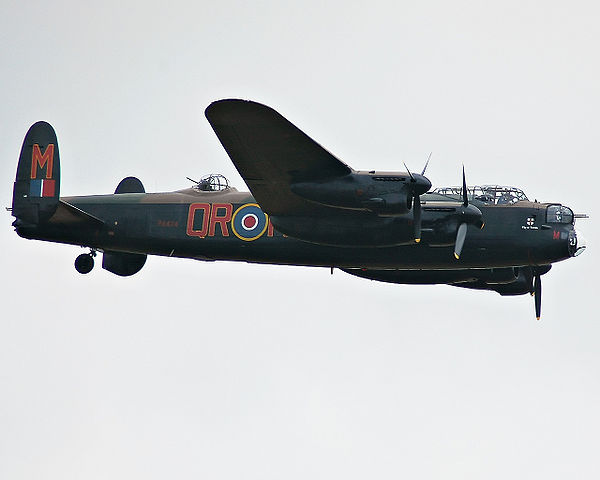
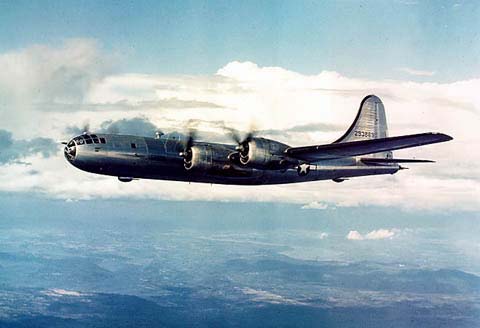
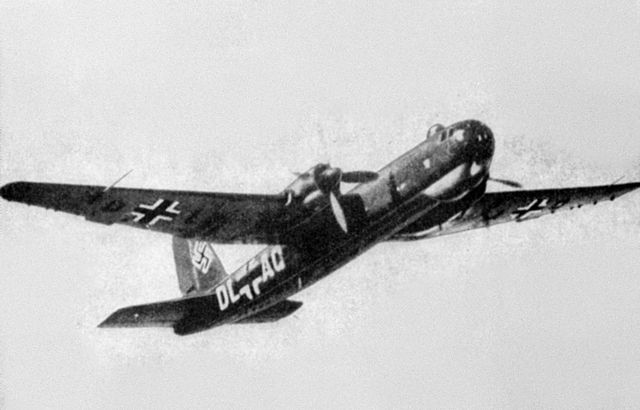
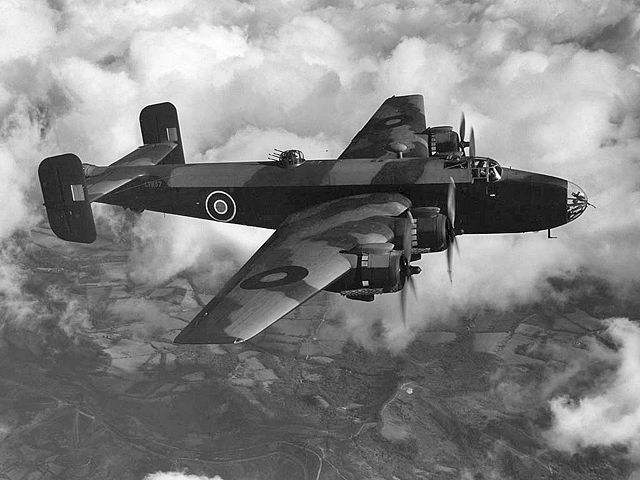
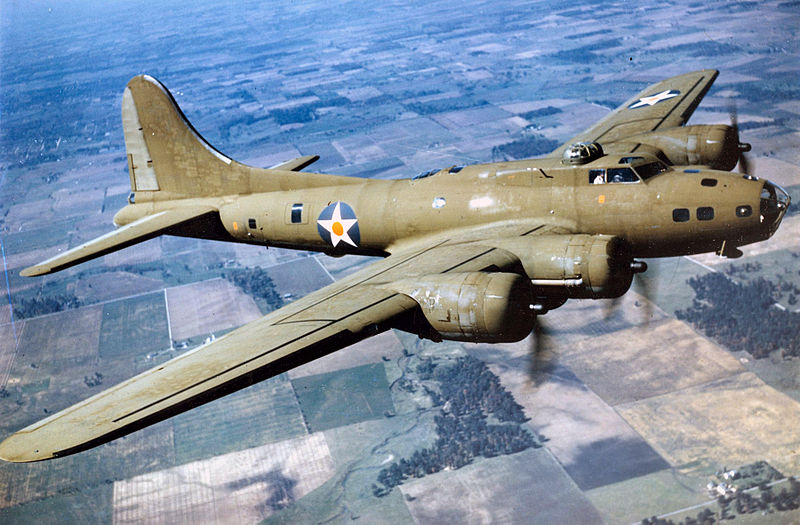
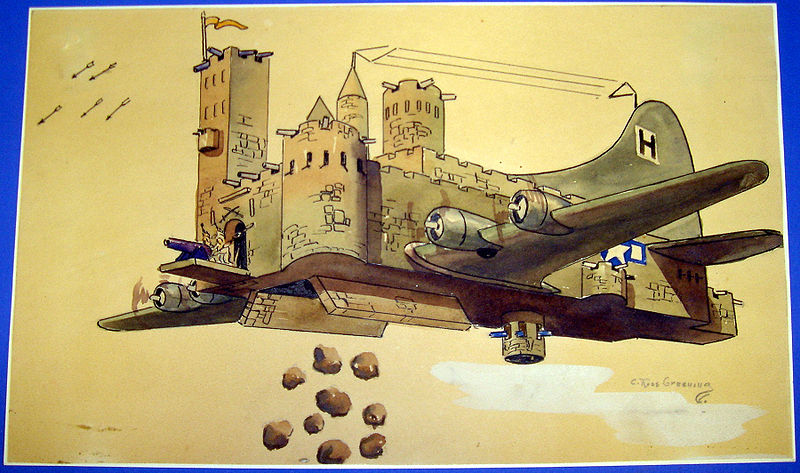
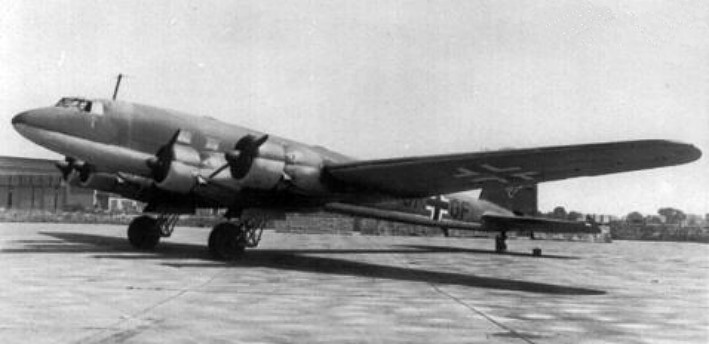
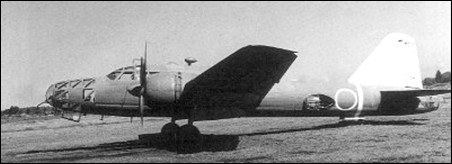
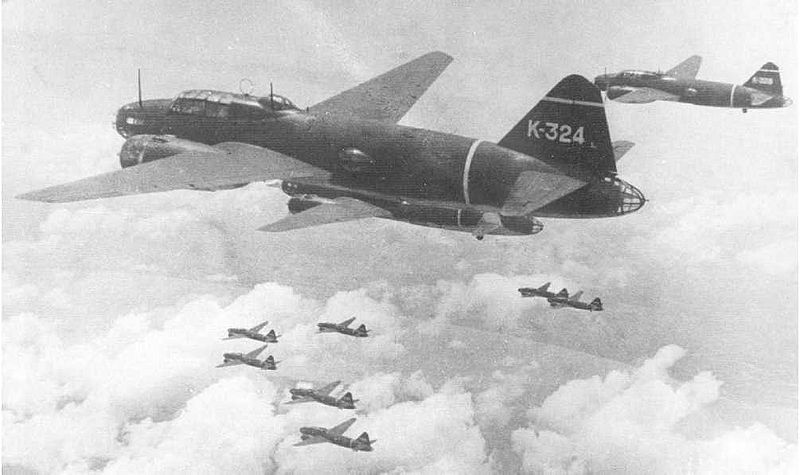
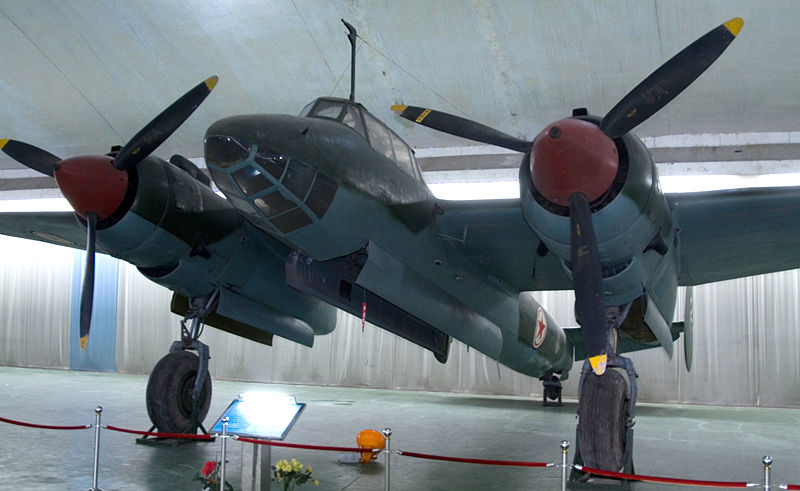
Max Mass Max Bombs Max Engine Range # Year Bombs * #
speed mass alt Built
kph ton ton ton km kWatt km MTon
UK Avro Lancaster 454 16.6 32.7 10.0 6.5 4x 954 4073 7377 1942 74
USA B-17 Flying Fortress 462 16.4 29.7 3.6 10.5 4x 895 3219 12731 1938 46
USA B-29 Superfortress 574 33.8 60.6 9.0 9.7 4x1640 5230 3970 1944 36
UK Handley Page Halifax 454 17.7 24.7 5.9 7.3 4x1205 3000 6176 1940 36.4
Soviet Petlyakov Pe-2 580 5.9 8.9 1.6 8.8 2x 903 1160 11427 1941 18
UK Short Stirling 454 21.3 31.8 6.4 5.0 4x1025 3750 2371 1939 15.2
Soviet Tupolev Tu-2 528 7.6 11.8 3.8 9.0 2x1380 2020 2257 1942 8.6
Germany Heinkel He 177 565 16.8 32.0 7.2 8.0 2x2133 1540 1169 1942 8.4
Germany Fokke-Wulf Condor 360 17.0 24.5 5.4 6.0 4x 895 3560 276 1937 1.5
Japan Mitsubishi Ki-67 537 8.6 13.8 1.6 9.5 2x1417 3800 767 1942 1.2
Japan Yokosuka P1Y Ginga 547 7.3 13.5 1.0 9.4 2x1361 5370 1102 1944 1.1
Japan Mitsubishi G4M 428 6.7 12.9 1.0 8.5 2x1141 2852 2435 1941 2.4
UK Total 126
USA Total 82
Soviet Total 27
Germany Total 10
Japan Total 5
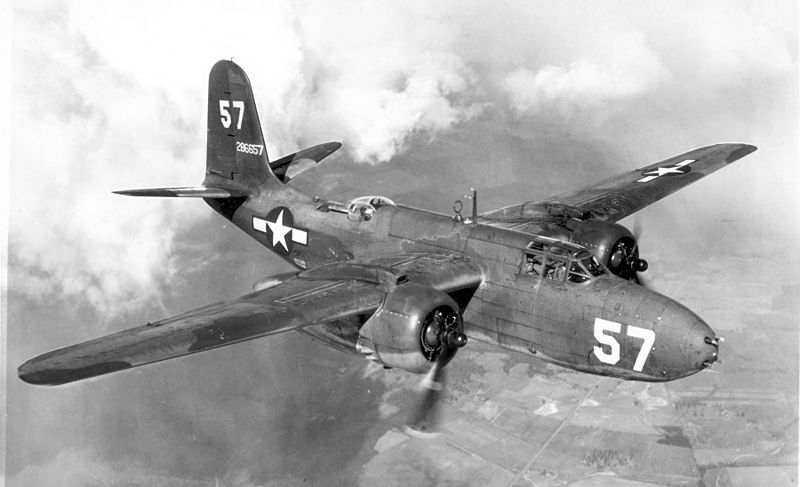
-531.jpeg)
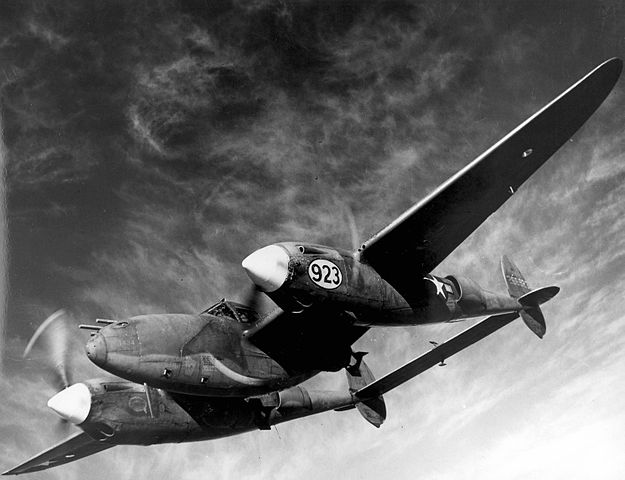
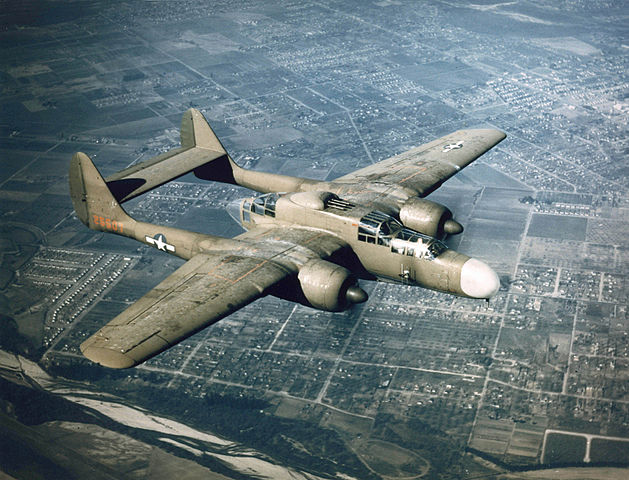
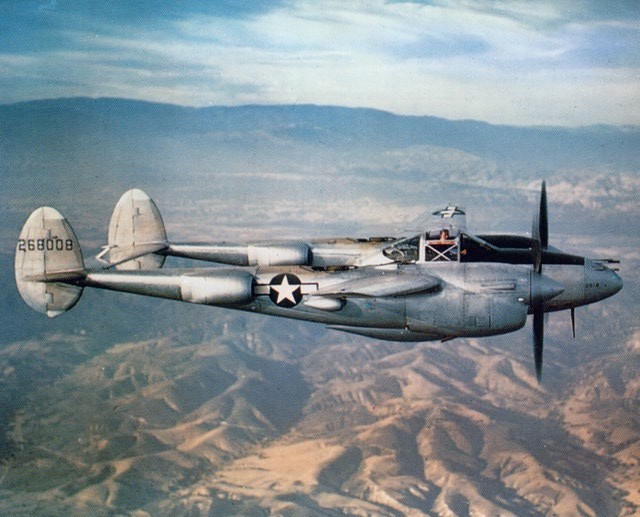
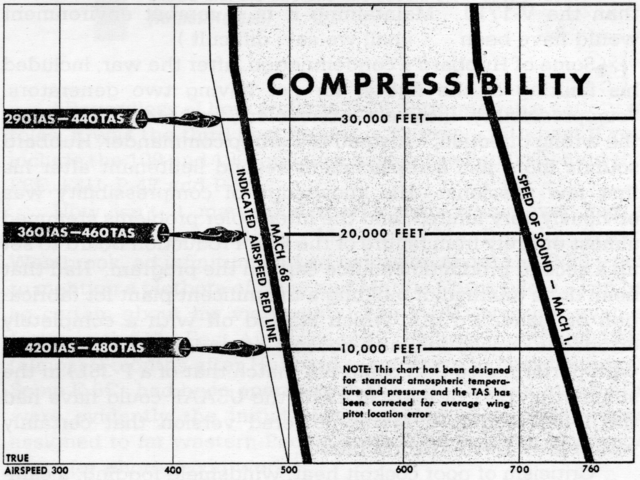
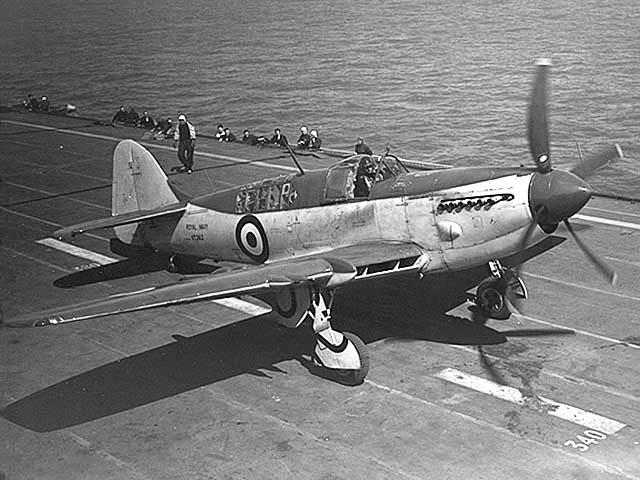
.jpg)
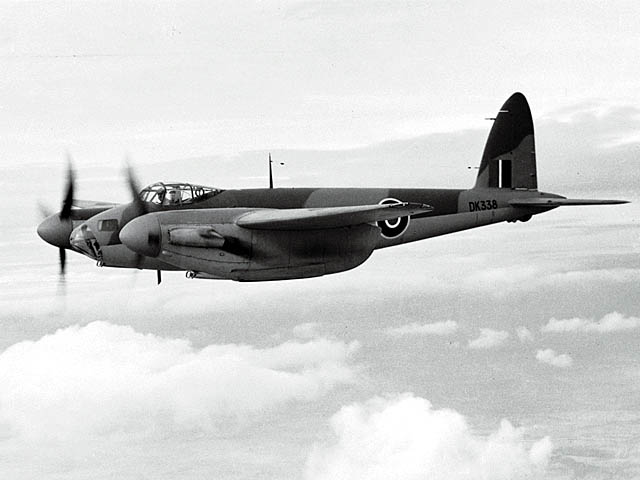
.jpg)
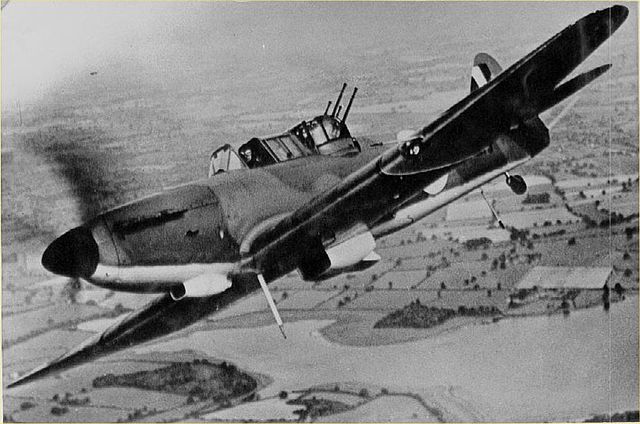
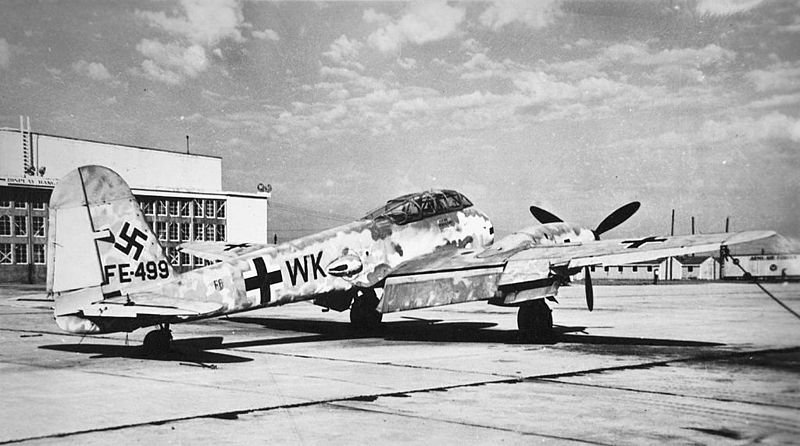

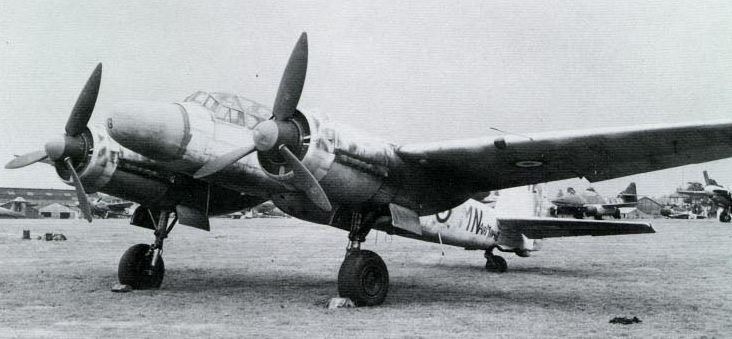
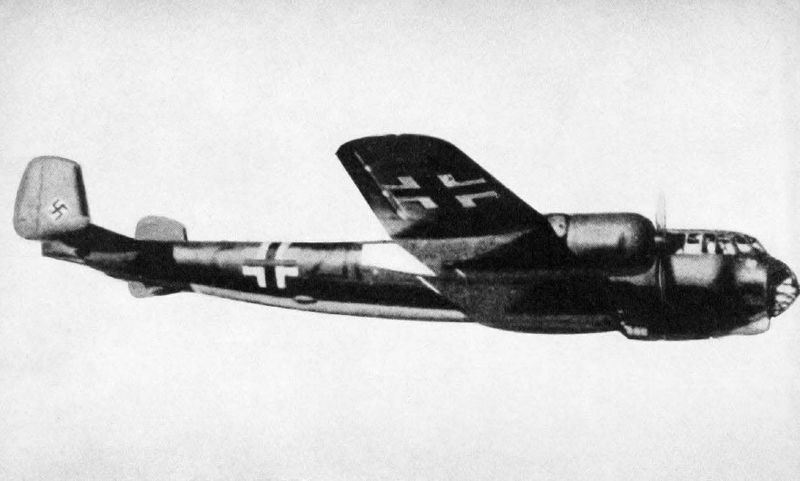
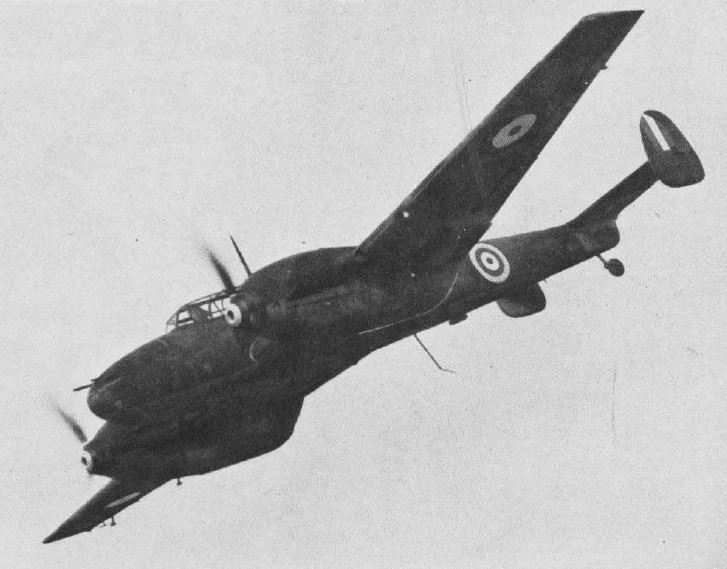
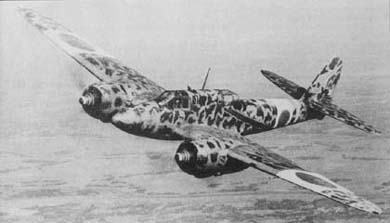
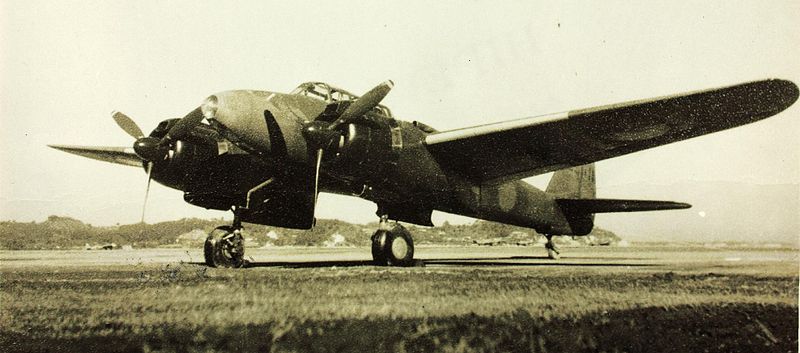
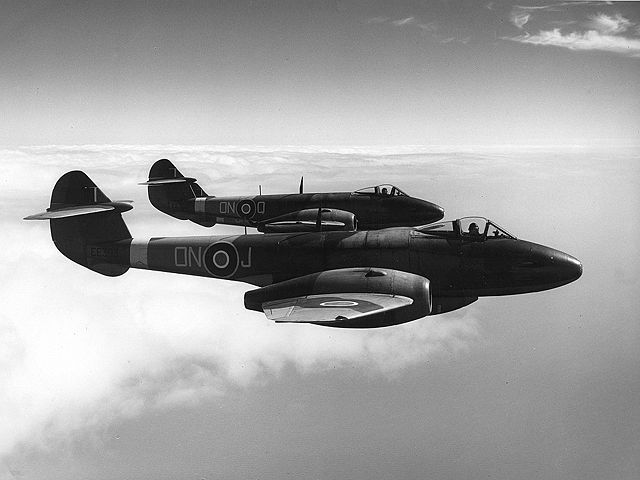
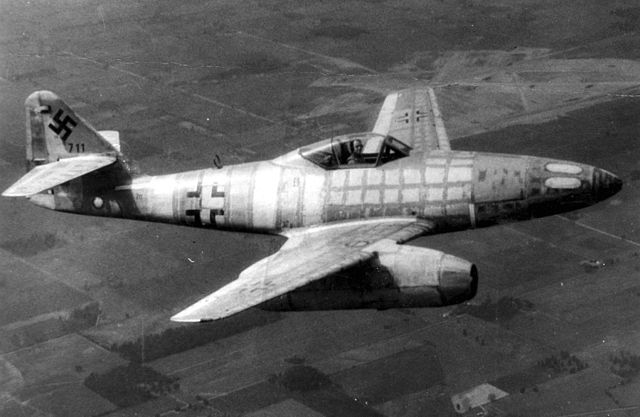
.jpg)
Max Climb Mass Max Bombs Max Engine Range # Year
speed mass alt Built
kph m/s ton ton ton km kWatt km
USA P51 Black Widow 589 12.9 10.6 16.2 2.9 10.6 2x1680 982 706 1944
USA A-20 Havoc 546 10.2 6.8 12.3 .9 7.2 2x1200 1690 7478 1941
USA F7F Tigercat 740 23 7.4 11.7 .9 12.3 2x1566 1900 364 1944
USA P-38 Lightning 667 24.1 5.8 9.8 2.3 13.0 2x1193 10037 1941
UK Fairey Firefly 509 8.8 4.4 6.4 .9 8.5 1x1290 2090 1702 1943
UK Mosquito 668 14.5 6.5 11.0 1.8 11.0 2x1103 2400 7781 1941
UK Beaufighter 515 8.2 7.1 11.5 .3 5.8 2x1200 2816 5928 1940
UK Fairie Fulmar 438 3.2 4.6 .1 8.3 1x 970 1255 600 1940
UK Defiant 489 9.0 2.8 3.9 0 9.2 1x 768 749 1064 1939
Japan Dragon Slayer 540 11.7 4.0 5.5 0 10.0 2x 783 1701 1941 Ki-45
Japan Flying Dragon 537 6.9 8.6 13.8 1.6 9.5 2x1417 3800 767 1942 Ki-67
Japan J1N Moonlight 507 8.7 4.5 8.2 0 2x 840 2545 479 1942
Ger. Hornet 624 9.3 6.2 10.8 1.0 10.0 2x1287 2300 1189 1943
Ger. Flying Pencil 557 3.5 9.1 16.7 4.0 7.4 2x1287 2145 1925 1941 Do-217
Ger. Heinkel He-219 616 13.6 0 9.3 2x1324 1540 300 1943
Ger. Junkers Ju-88 360 11.1 12.7 0 5.5 2x1044 1580 15183 1939
Ger. Me-110 595 12.5 7.8 0 11.0 2x1085 900 6170 1937
SU Petlyakov Pe-3 530 12.5 5.9 8.0 .7 9.1 2x 820 1500 360 1941
UK Gloster Meteor 965 35.6 4.8 7.1 .9 13.1 Jet 965 3947 1944
Ger. Me-262 Swallow 900 ~25 3.8 7.1 1.0 11.5 Jet 1050 1430 1944
Ger. Heinkel He-162 840 23.4 1.7 2.8 0 12.0 Jet 975 320 1945
Me-262 Swallow jet = 2x 8.8 kNewtons
Heinkel He-162 jet = 1x 7.8 kNewtons
Gloster Meteor jet = 2x16.0 kNewtons
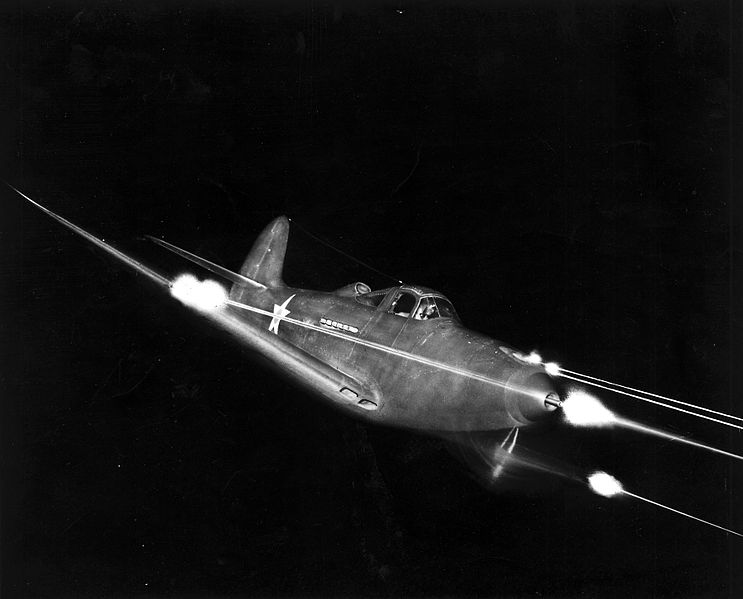
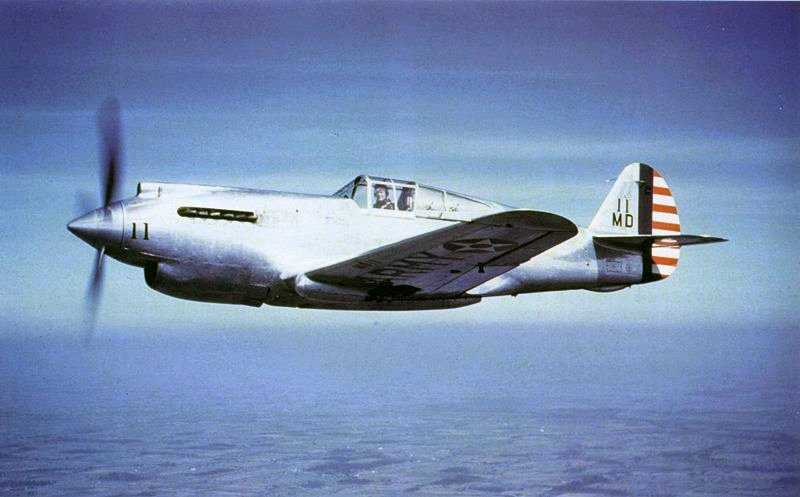
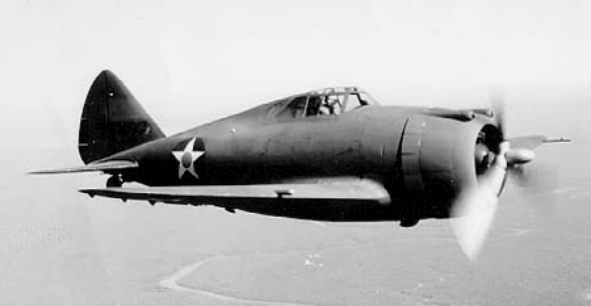
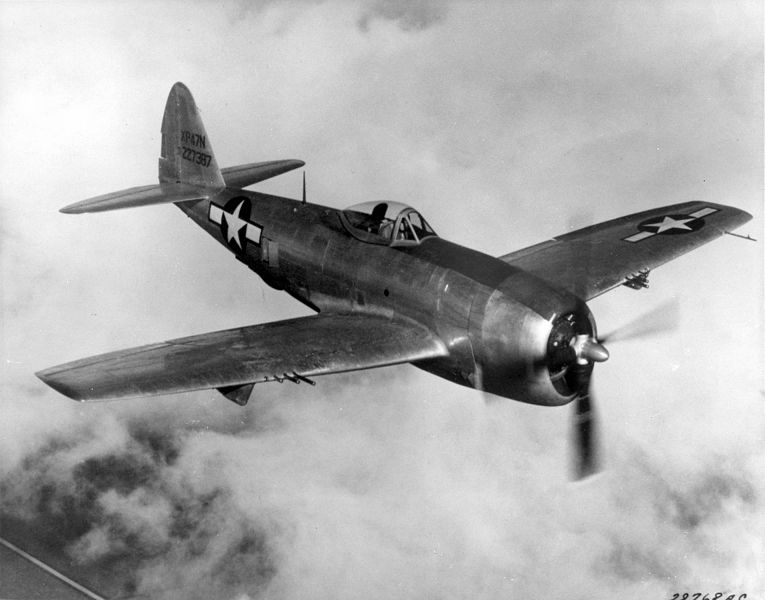
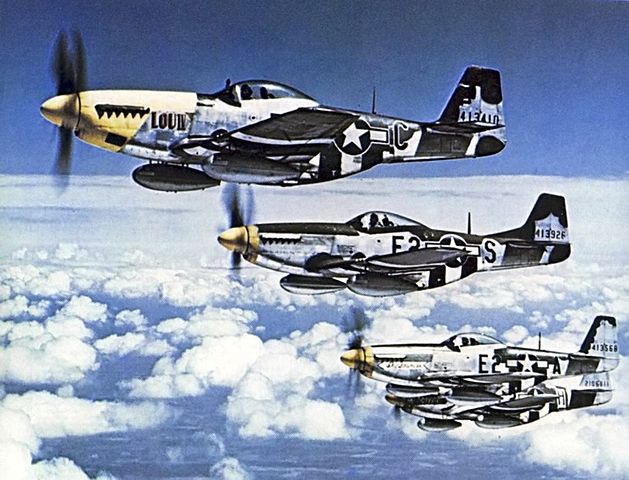
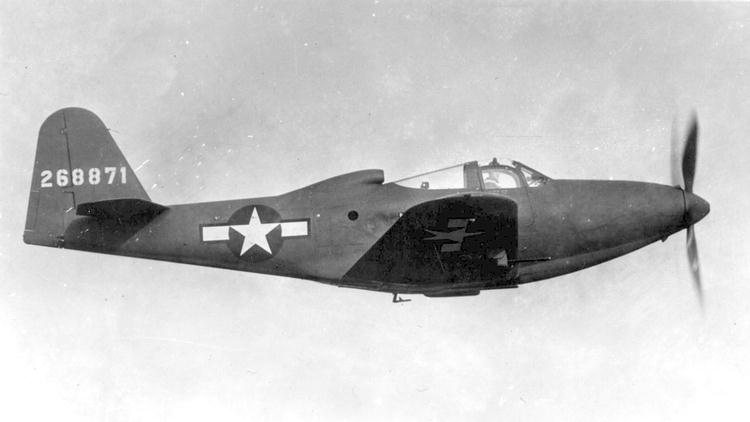
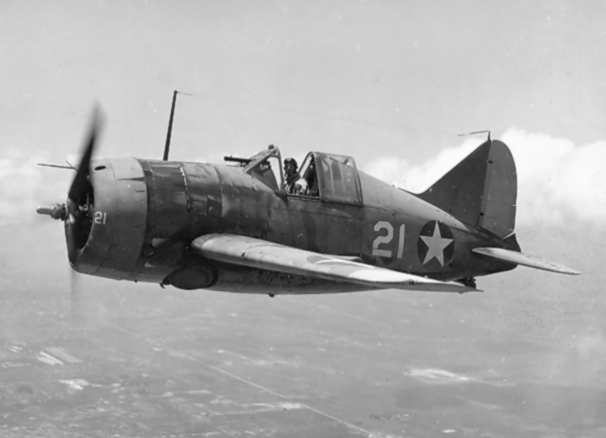
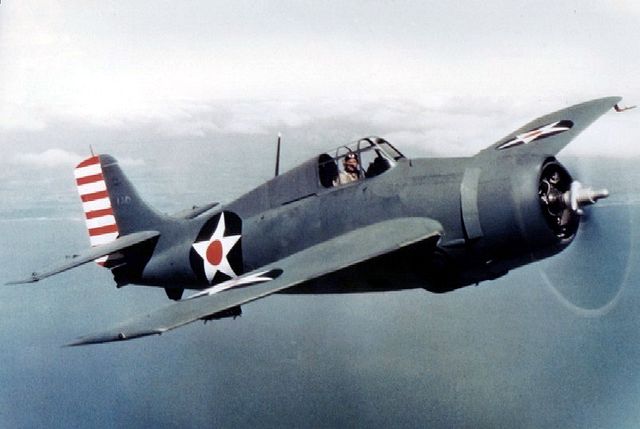
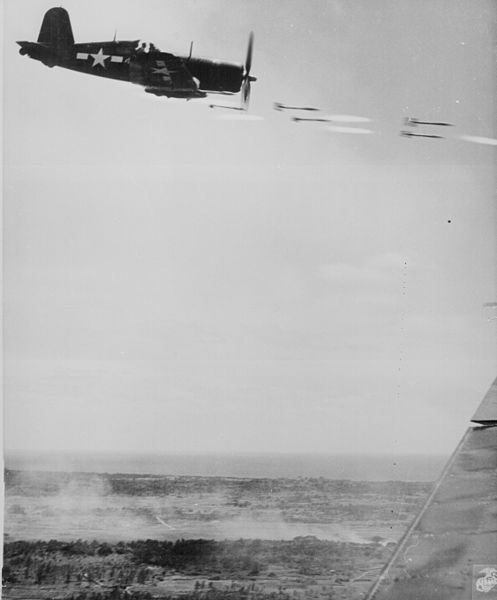
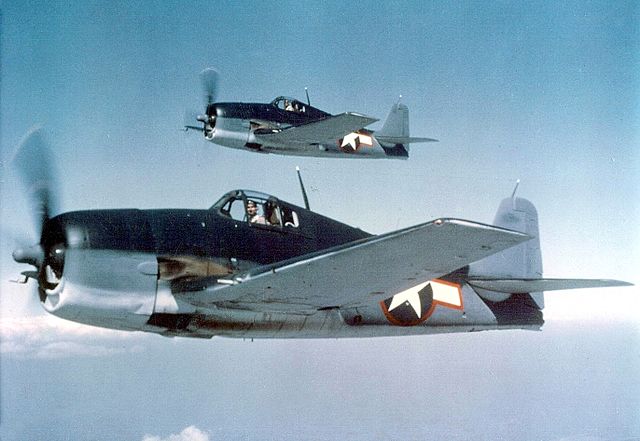
.jpg)
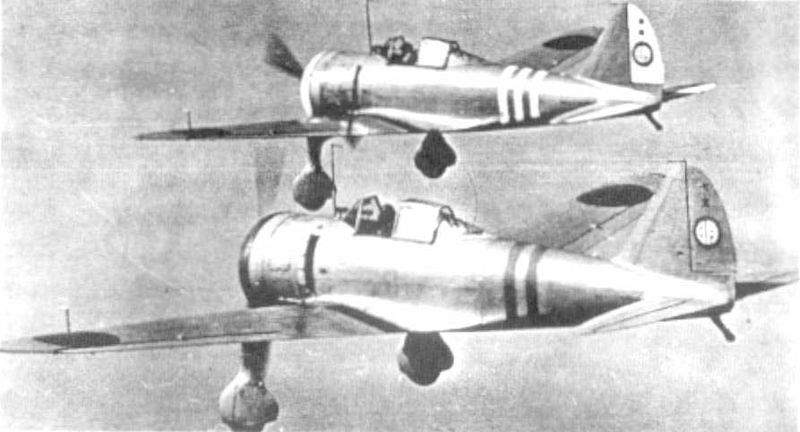
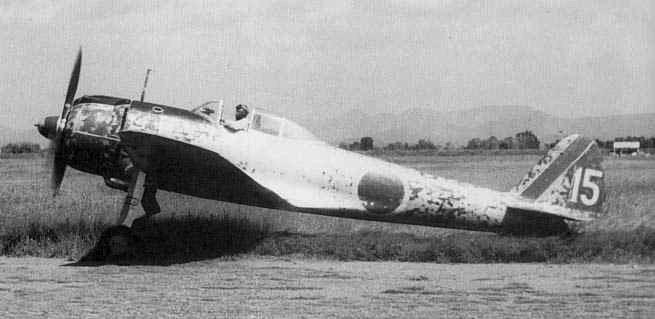
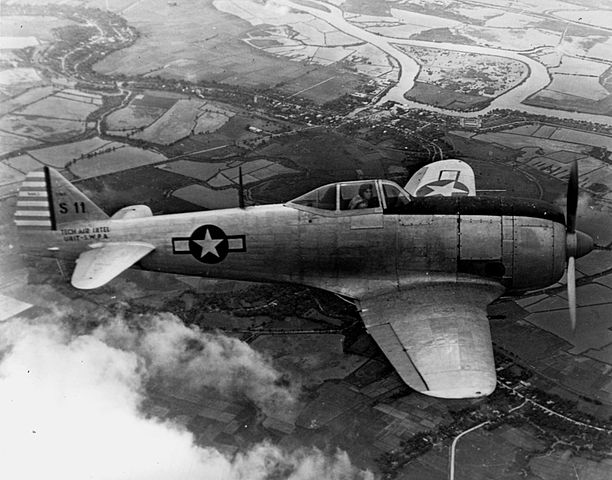
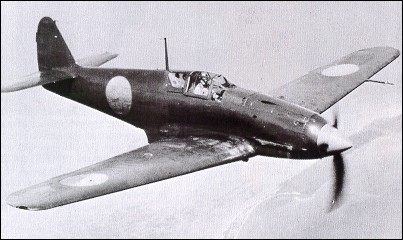
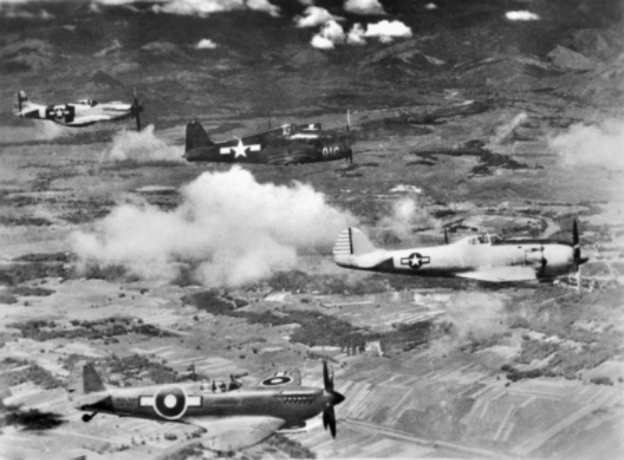
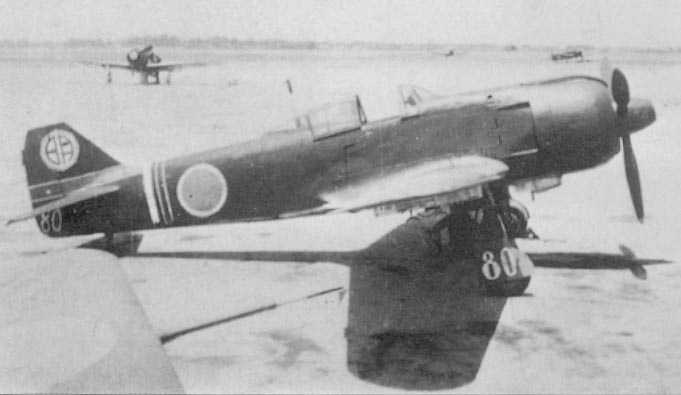
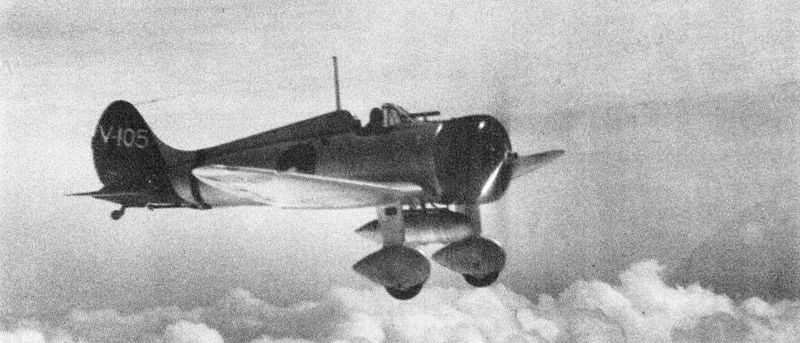
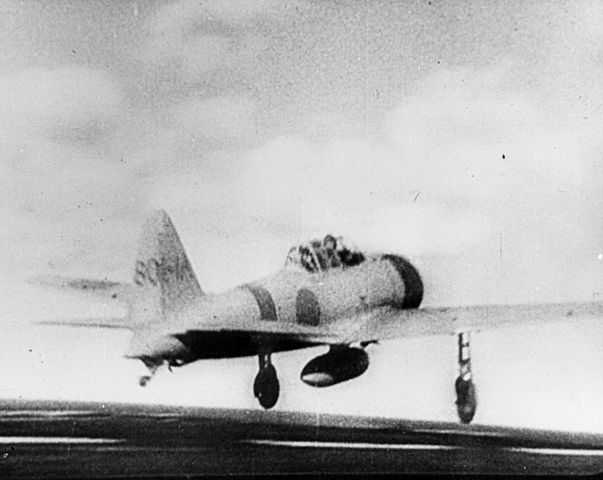
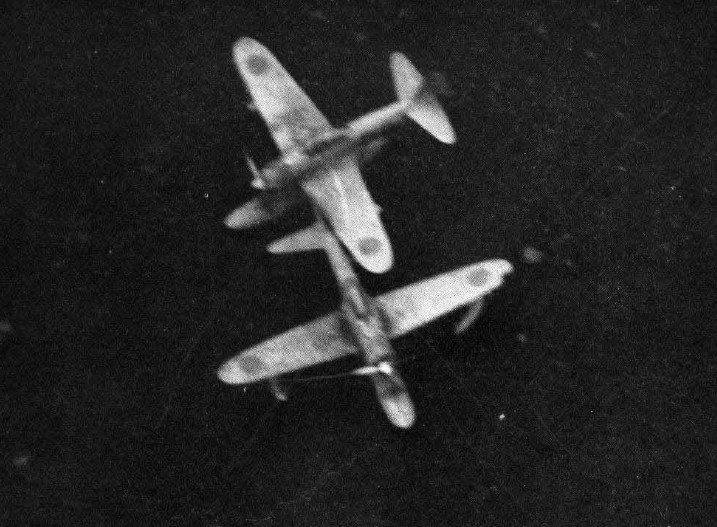
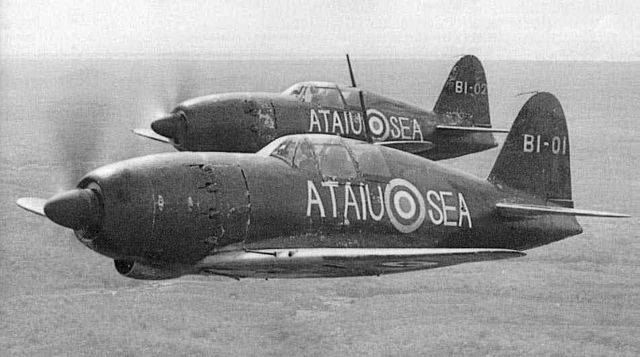
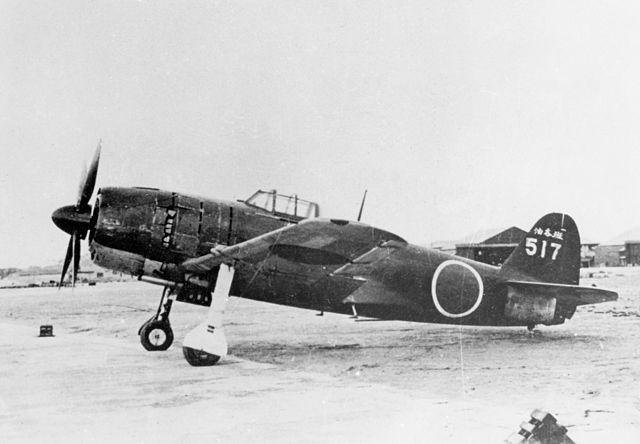
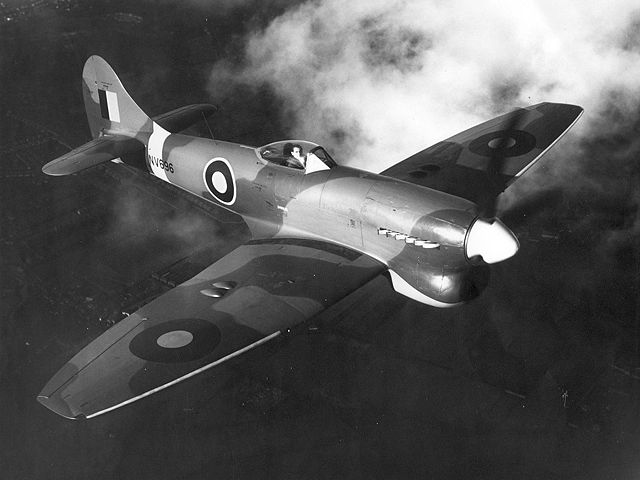
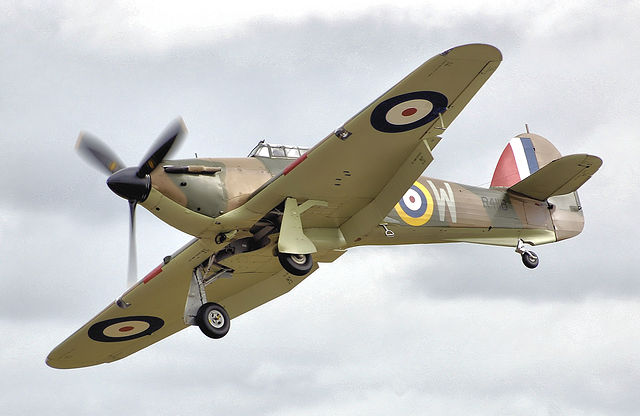
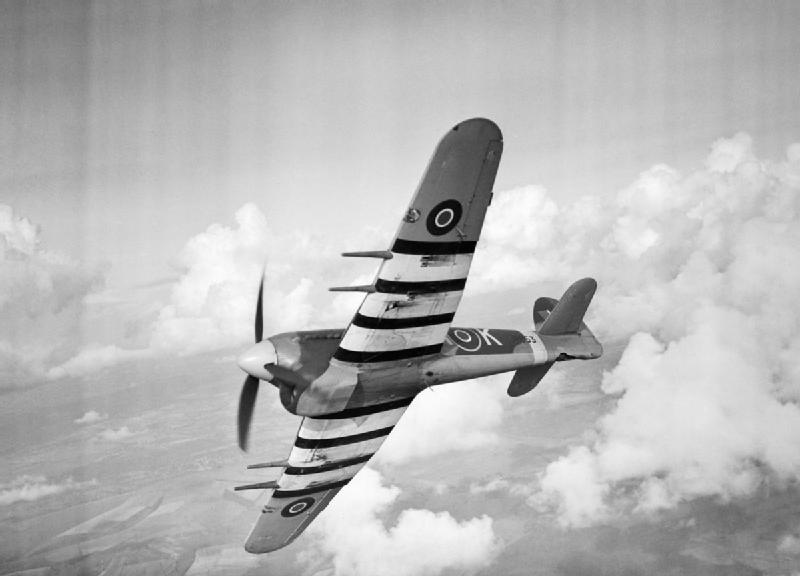
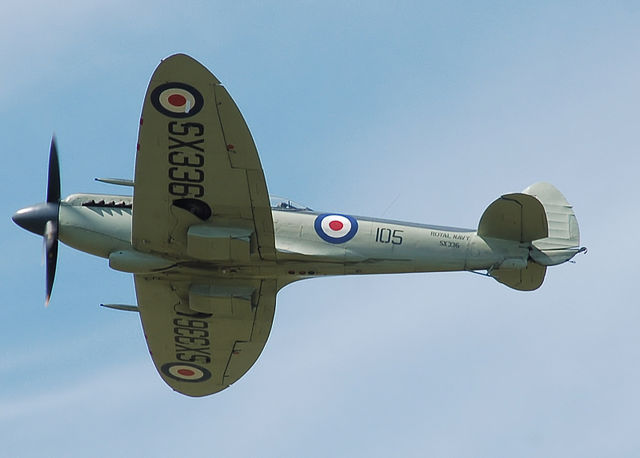
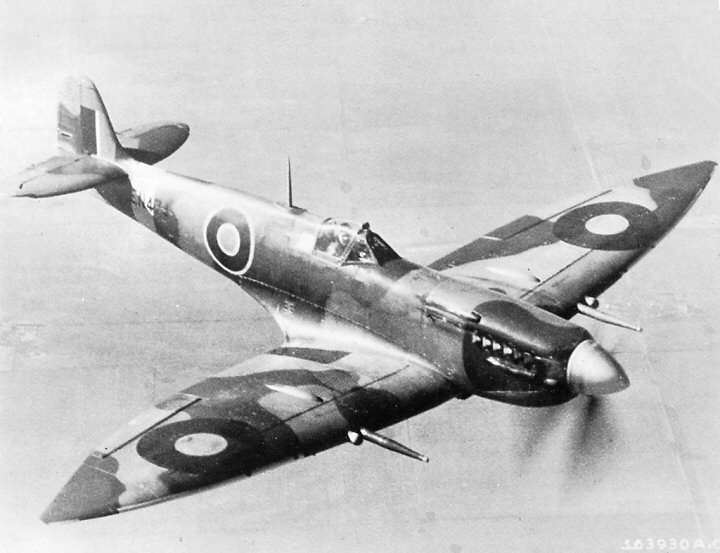
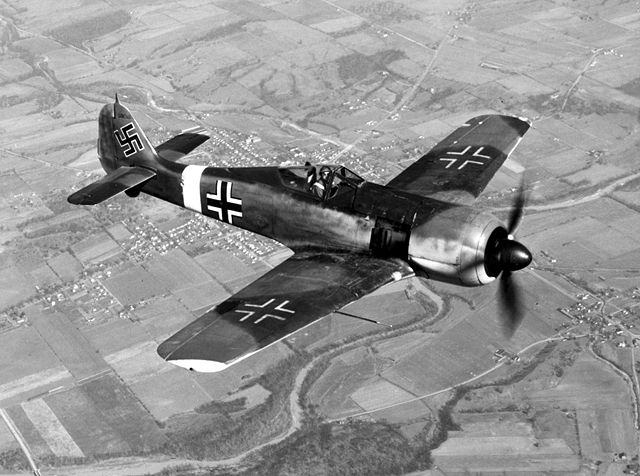
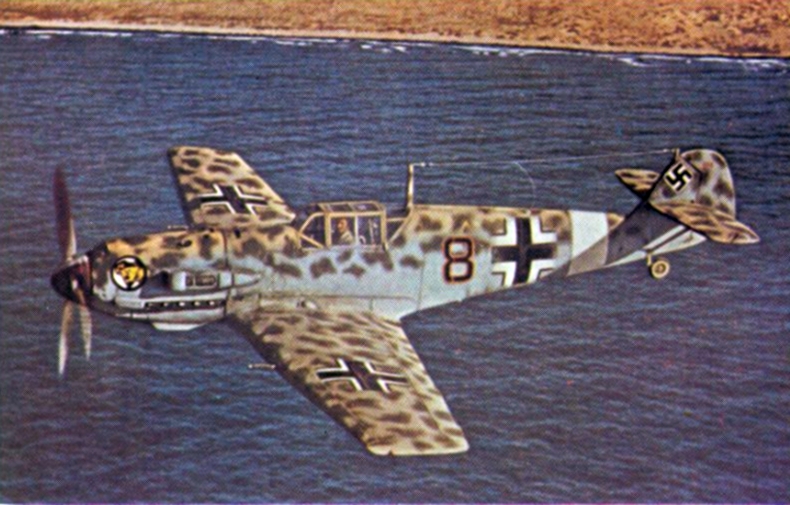

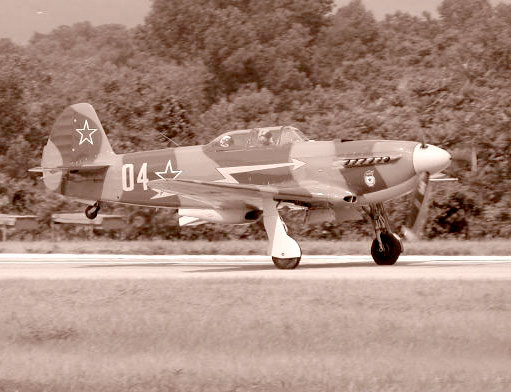
.jpg)
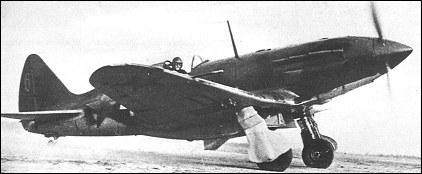
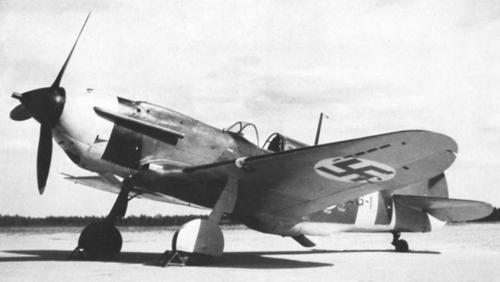
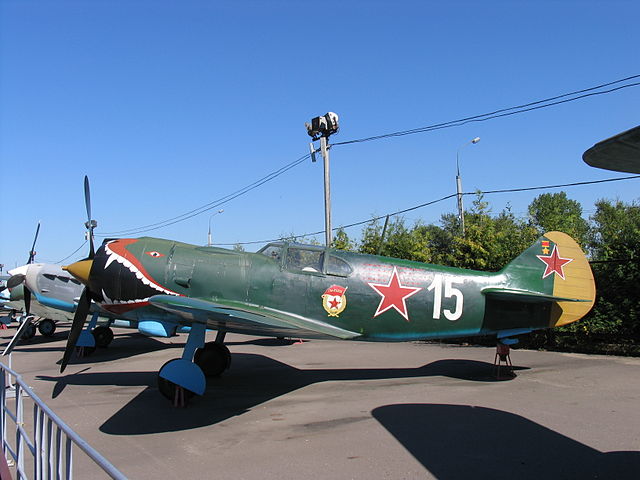
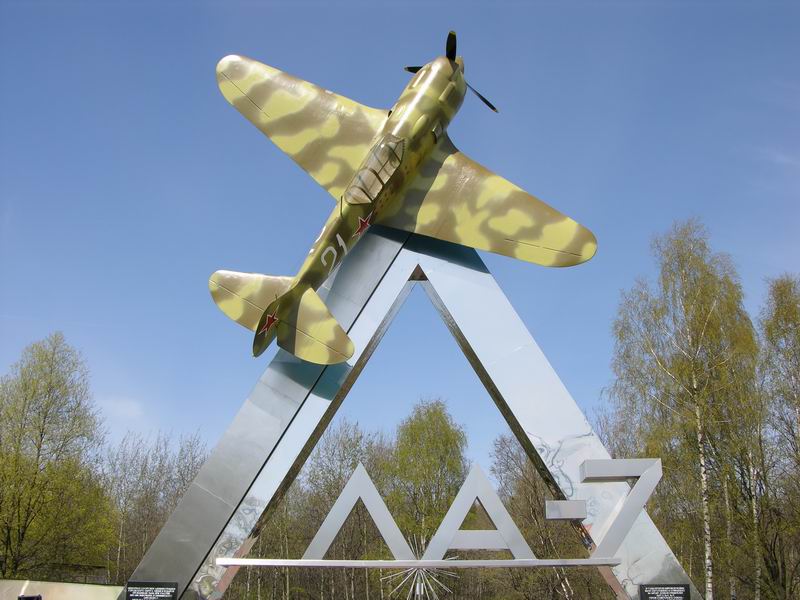
Max Climb Mass Max Bombs Max Engine Range # Year
speed mass alt Built
kph m/s ton ton ton km kWatt km
USA P-39 Airacobra 626 19.3 3.0 3.8 .2 10.7 1x 894 840 9588 1941
USA P-63 Kingcobra 660 12.7 3.1 4.9 .7 13.1 1x1340 725 3303 1943
USA F2A Buffalo 517 12.4 2.1 3.2 0 10.1 1x 890 1553 509 1939
USA P-40 Warhawk 580 11.0 2.8 4.0 .9 8.8 1x 858 1100 13738 1939
USA P-51 Mustang 703 16.3 3.5 5.5 .5 12.8 1x1111 2755 >15000 1942
USA F4F Wildcat 515 11.2 2.7 4.0 0 10.4 1x 900 1337 7885 1940
USA F6F Hellcat 629 17.8 4.2 7.0 1.8 11.4 1x1491 1520 12275 1943
USA F8F Bearcat 730 23.2 3.2 6.1 .5 12.4 1x1678 1778 1265 1945
USA P-43 Lancer 573 13.0 2.7 3.8 0 11.0 1x 895 1046 272 1941
USA P-47 Thunderbolt 713 16.2 4.5 7.9 1.1 13.1 1x1938 1290 15677 1942
USA F4U Corsair 717 22.1 4.2 5.6 1.8 12.6 1x1775 1617 12571 1942
Japan Zero 534 15.7 1.7 2.8 .3 10.0 1x 700 3104 10939 1940
Japan N1K Strong Wind 658 20.3 2.7 4.9 .5 10.8 1x1380 1716 1532 1943
Japan Ki-84 "Gale" 686 18.3 2.7 4.2 .7 11.8 1x1522 2168 3514 1943
Japan Ki-61 580 15.2 2.6 3.5 .5 11.6 1x 864 580 3078 1942
Japan Ki-100 580 13.9 2.5 3.5 0 11.0 1x1120 2200 396 1945
Japan A5M 440 1.2 1.8 0 9.8 1x 585 1200 1094 1936
Japan A6M2 436 12.4 1.9 2.9 .1 10.0 1x 709 1782 327 1942
Japan J2M Thunderbolt 655 23.4 2.8 3.2 .1 11.4 1x1379 560 671 1942
Japan Ki-27 470 15.3 1.1 1.8 .1 12.2 1x 485 627 3368 1937
Japan Ki-43 530 1.9 2.9 .5 11.2 1x 858 1760 5919 1941
Japan Ki-44 605 19.5 2.1 3.0 0 11.2 1x1133 1225 1942
UK Hawker Hurricane 547 14.1 2.6 4.0 .5 11.0 1x 883 965 14583 1943
UK Hawker Tempest 700 23.9 4.2 6.2 .9 11.1 1x1625 1190 1702 1944
UK Hawker Typhoon 663 13.6 4.0 6.0 .9 10.7 1x1685 821 3317 1941
UK Submarine Seafire 578 13.4 2.8 3.5 9.8 1x1182 825 2334 1942
UK Submarine Spitfire 595 13.2 2.3 3.0 0 11.1 1x1096 756 20351 1938
Ger. Fw-190 685 17.0 3.5 4.8 .5 12.0 1x1287 835 >20000 1941
Ger. Bf-109 640 17.0 2.2 3.4 .3 12.0 1x1085 850 34826 1937
SU MiG-3 640 13.0 2.7 3.4 .2 12.0 1x 993 820 3172 1941
SU Yak-1 592 15.4 2.4 2.9 0 10.0 1x 880 700 8700 1940
SU Yak-3 655 18.5 2.1 2.7 0 10.7 1x 970 650 4848 1944
SU Yak-7 571 12.0 2.4 2.9 0 9.5 1x 780 643 6399 1942
SU Yak-9 672 16.7 2.5 3.2 0 10.6 1x1120 675 16769 1942
SU LaGG-3 575 14.9 2.2 3.2 .2 9.7 1x 924 1000 6528 1941
SU La-5 648 16.7 2.6 3.4 .2 11.0 1x1385 765 9920 1942
SU La-7 661 15.7 3.3 .2 10.4 1x1230 665 5753 1944
SU Polykarpov I-16 525 14.7 1.5 2.1 .5 14.7 1x 820 700 8644 1934
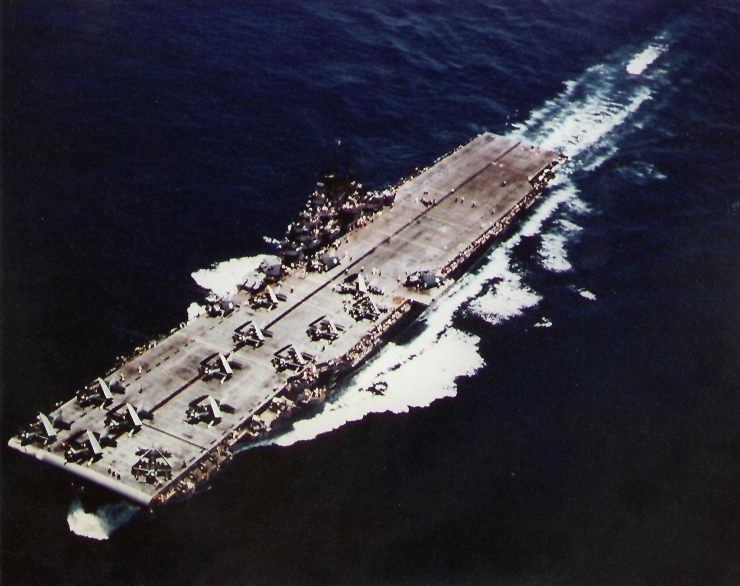
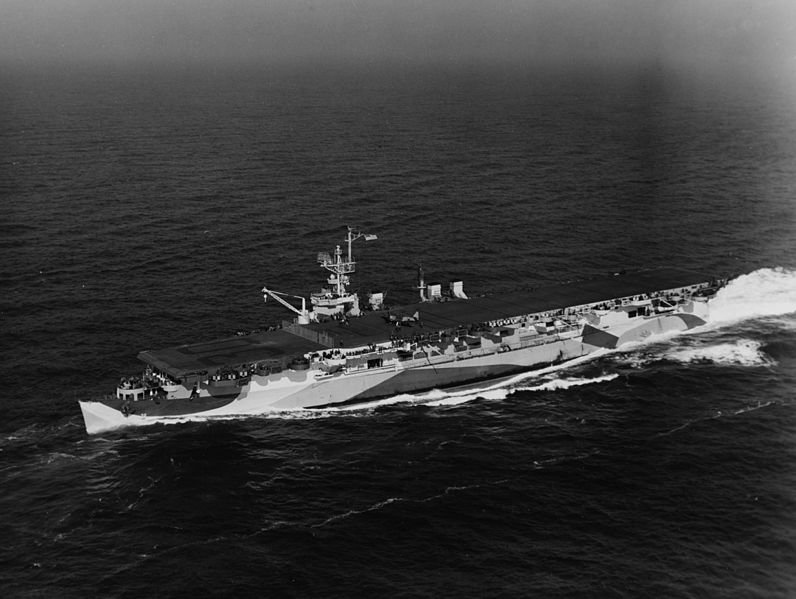
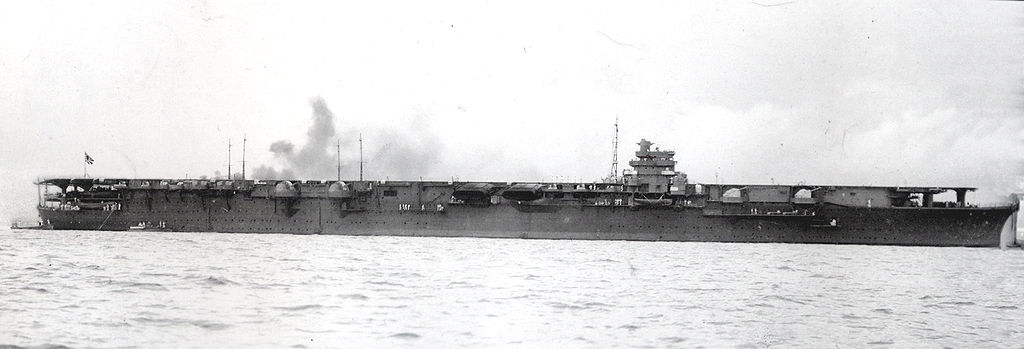
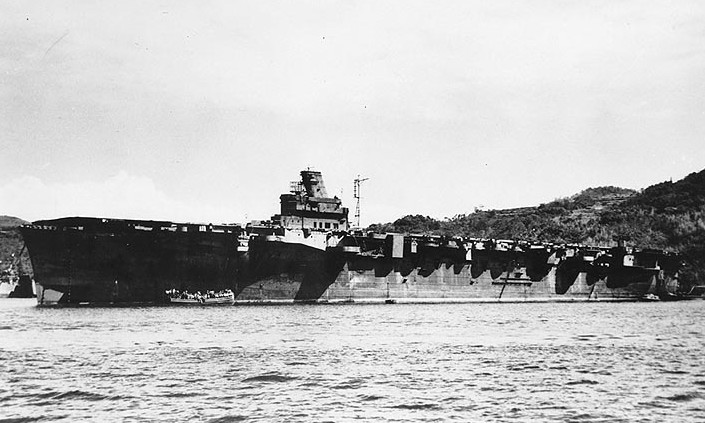
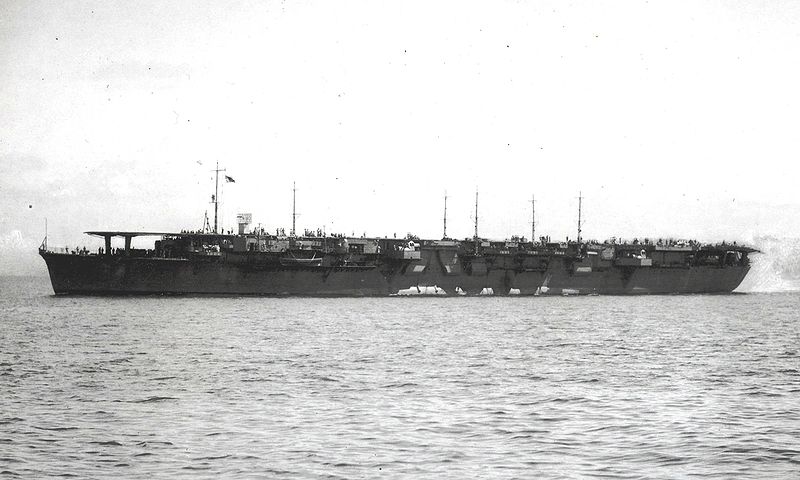
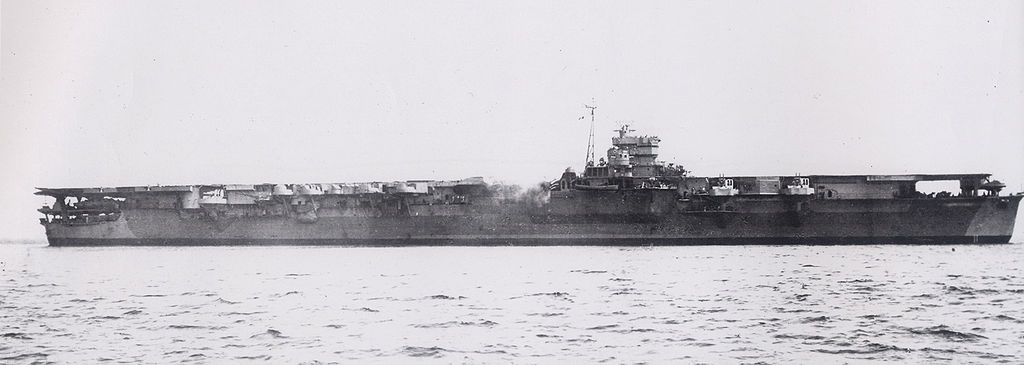

Class Speed Power Length Displace Planes # Year
kph MWatt m kton built
USA Essex 60.6 110 263 47 100 24 1942
USA Independence 58 75 190 11 33 9 1942
Japan Shokaku 63.9 120 257.5 32.1 72 2 1941
Japan Hiyo 47.2 42 219.3 24.2 53 3 1944
Japan Unryu 63 113 227.4 17.8 65 3 1944
Japan Chitose 53.5 42.4 192.5 15.5 30 2 1944
Japan Zuiho 52 39 205.5 11.4 30 2 1940
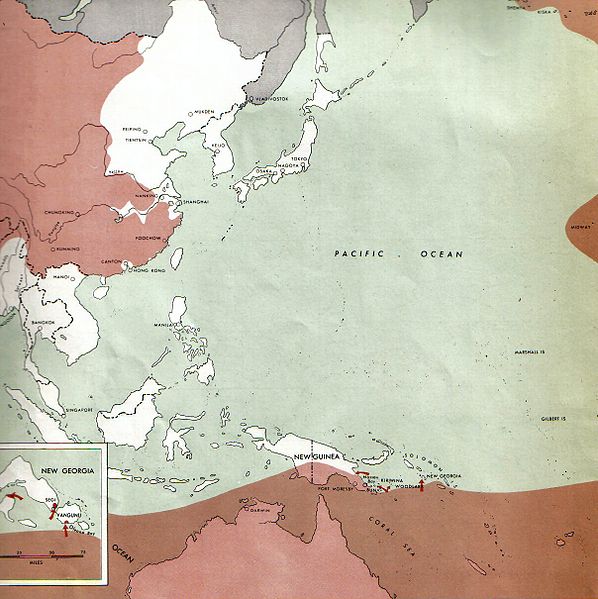
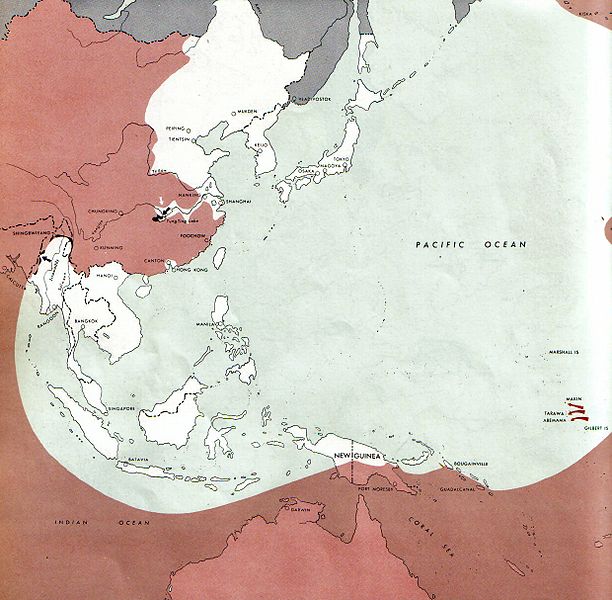
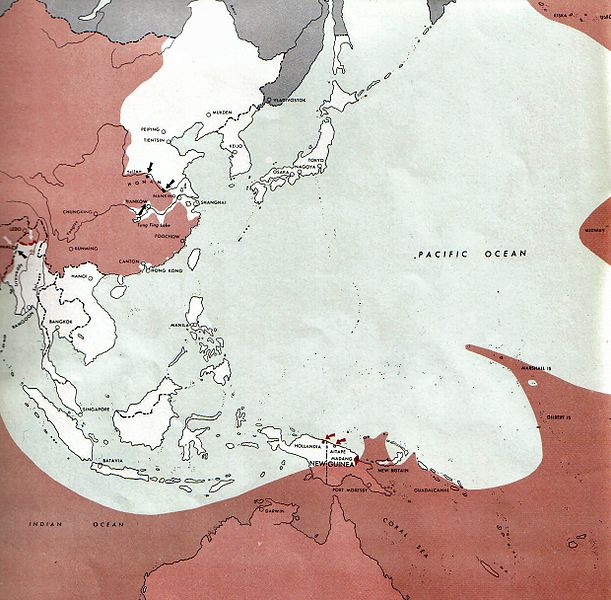
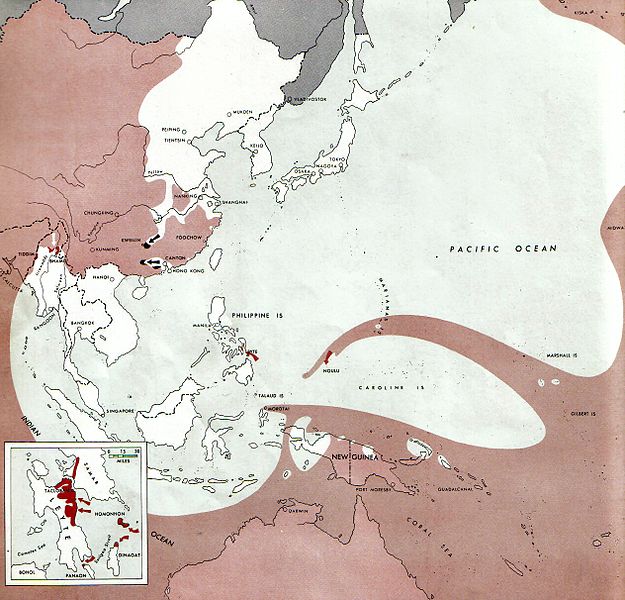
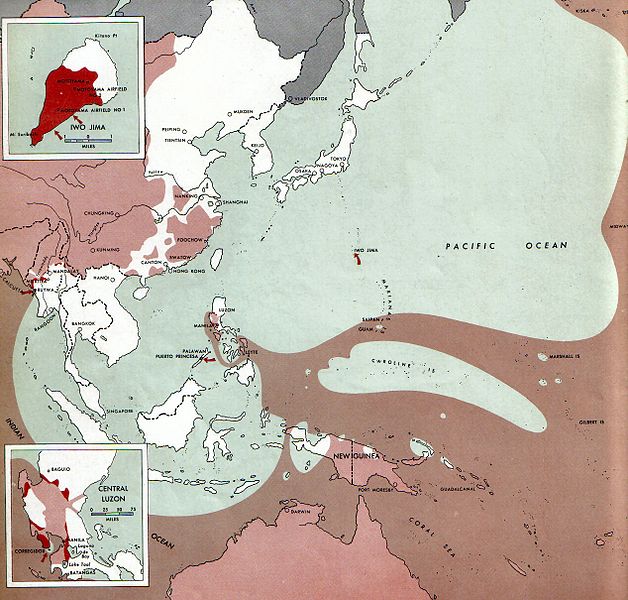
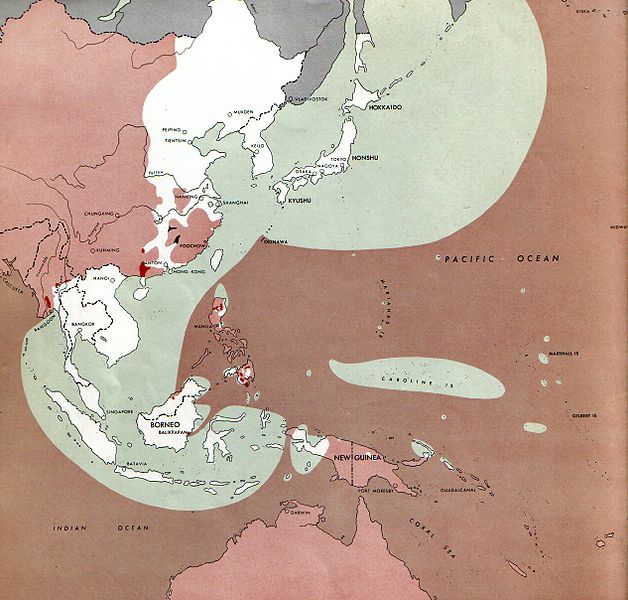
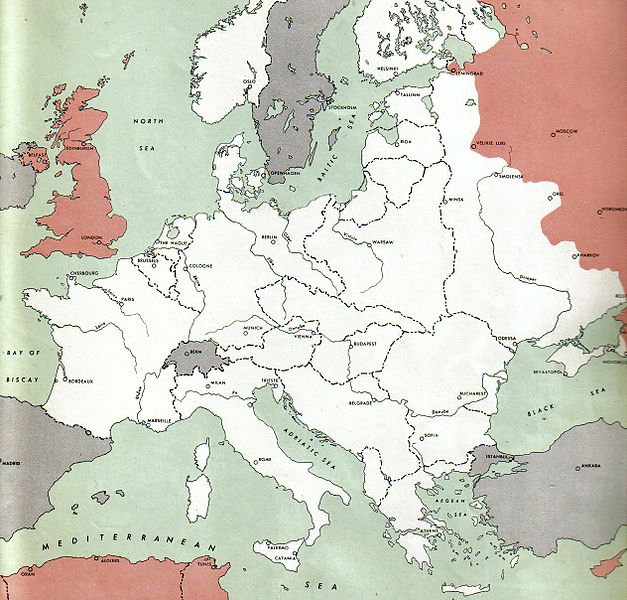
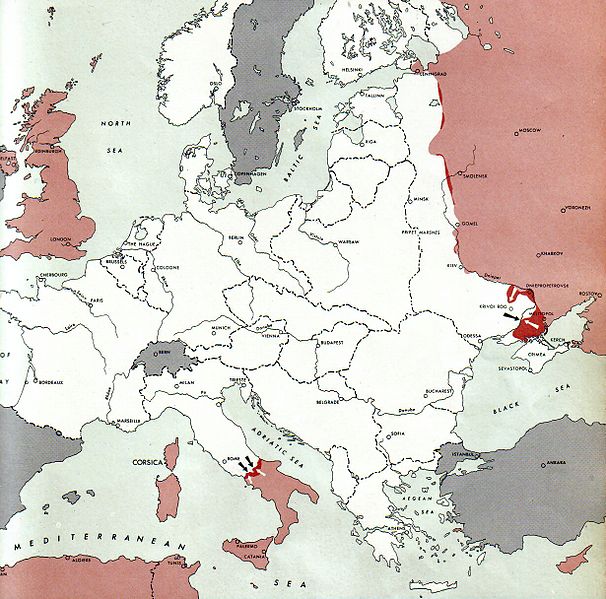
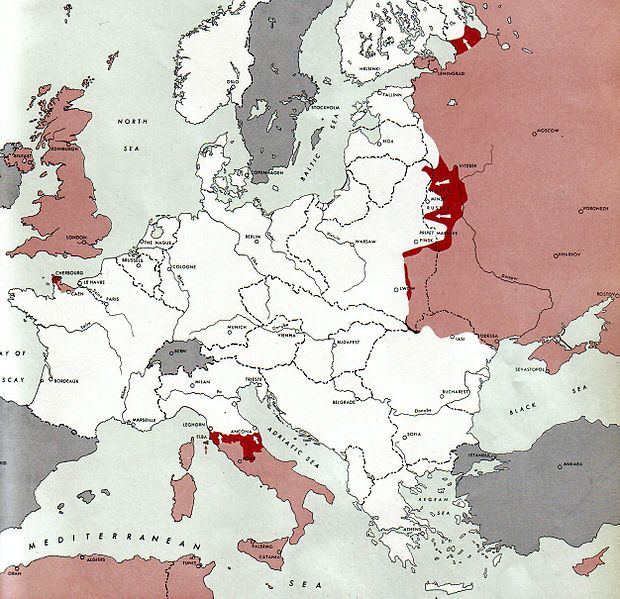
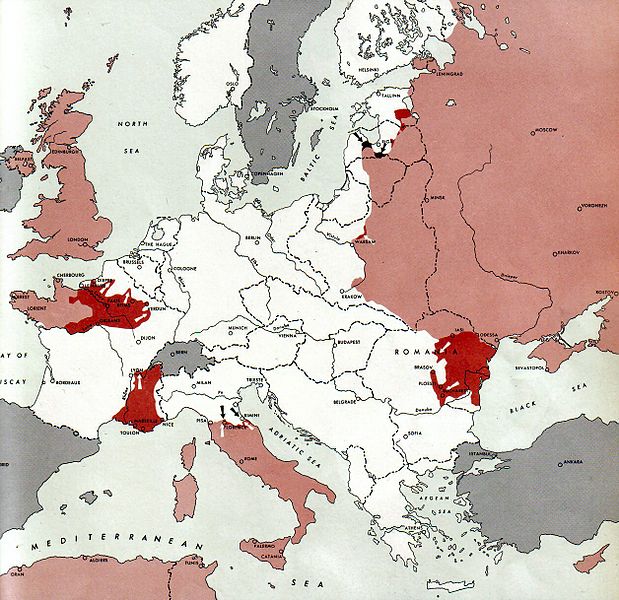
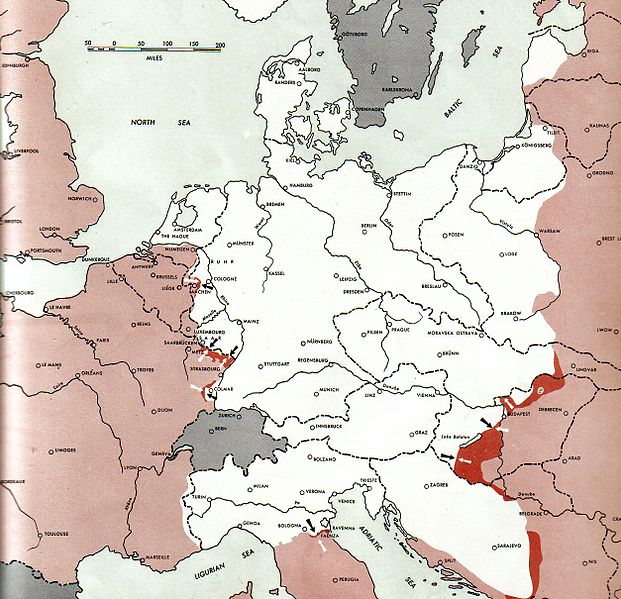
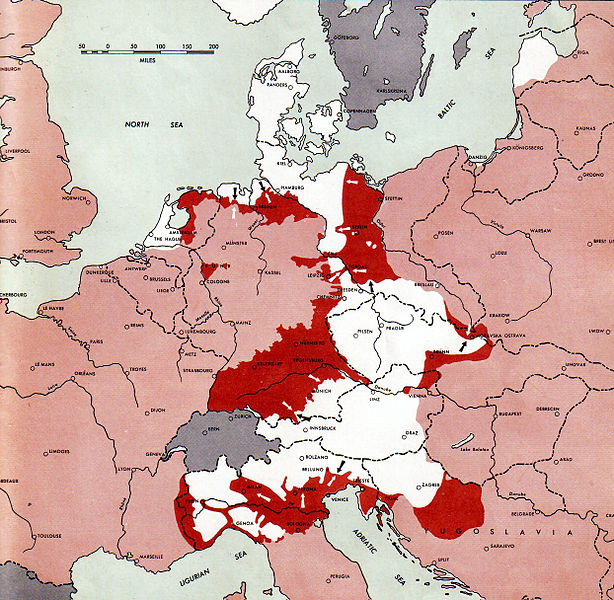
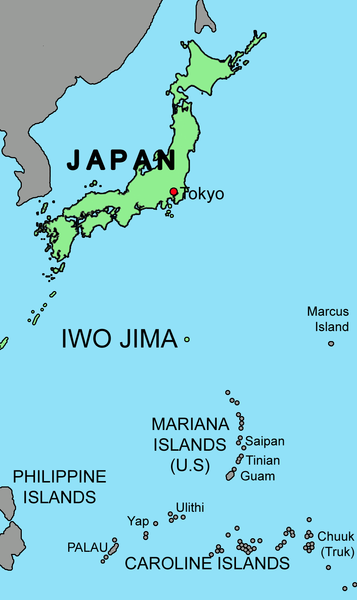
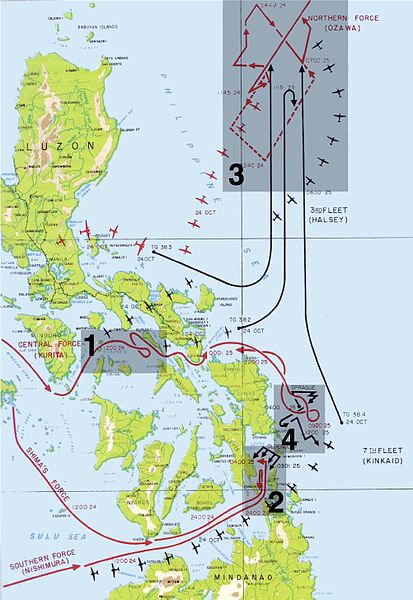
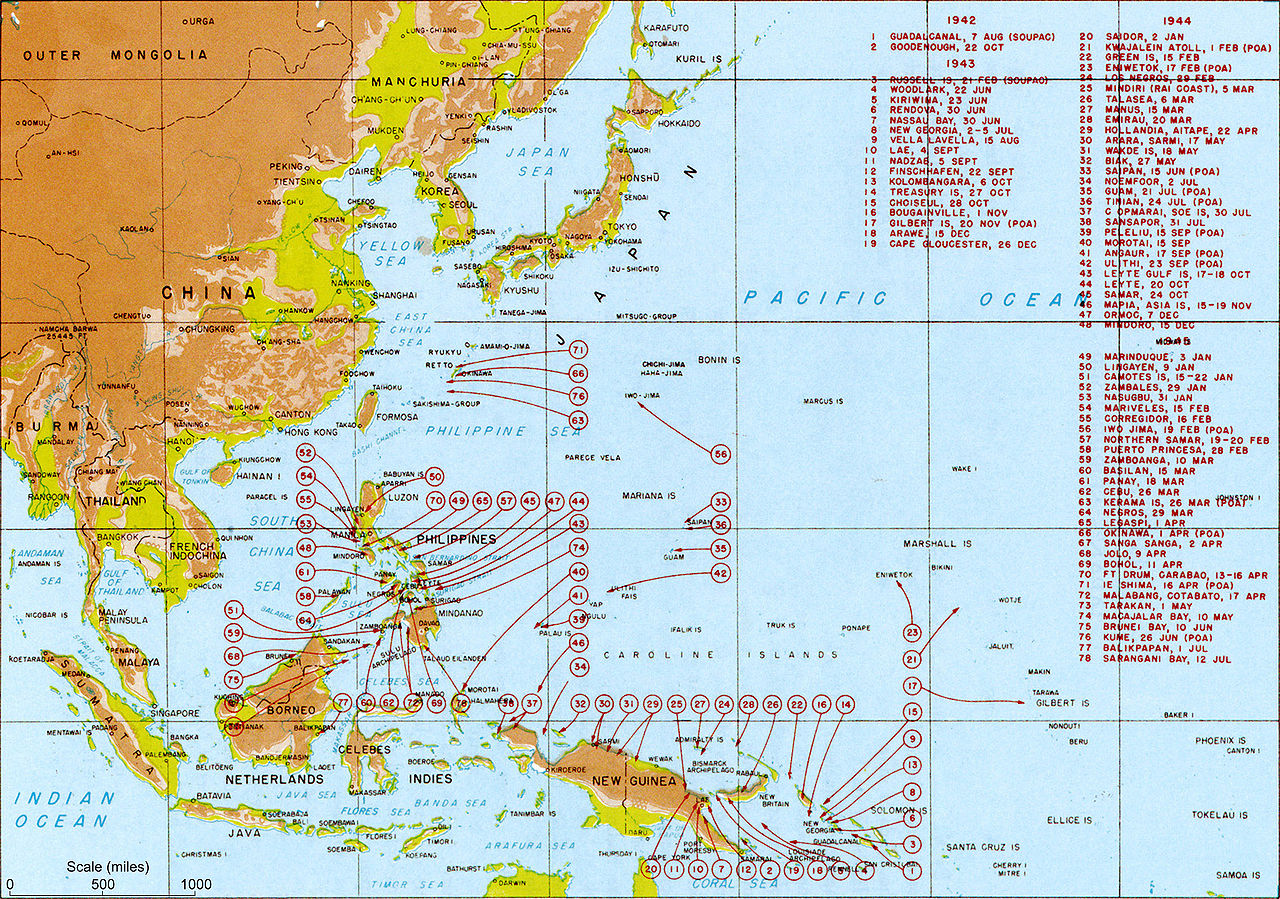
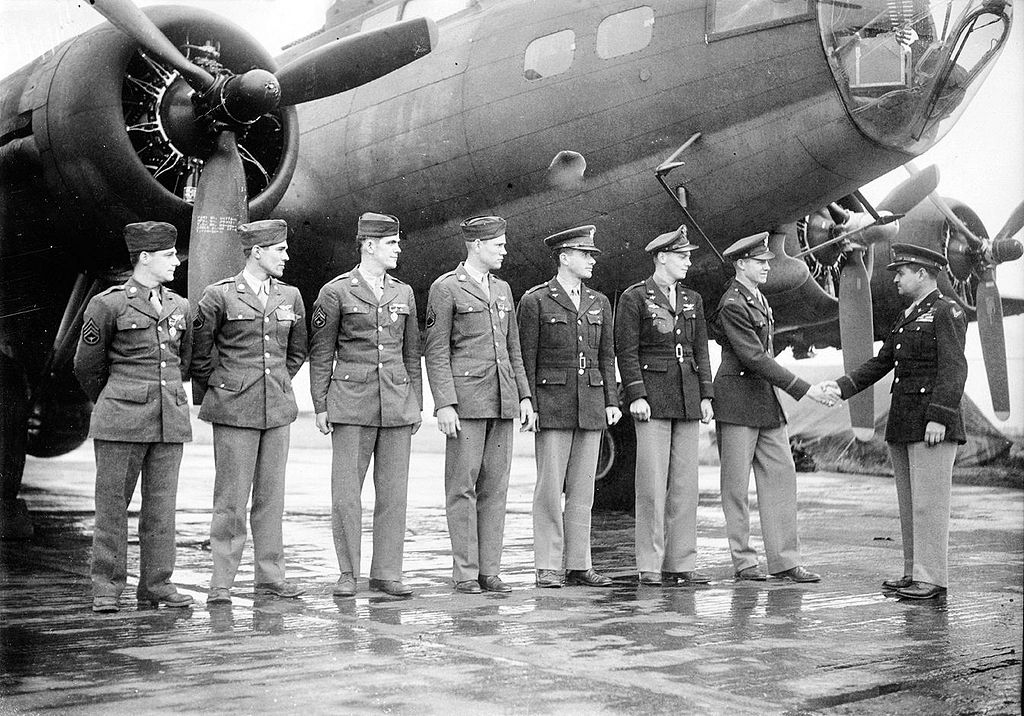
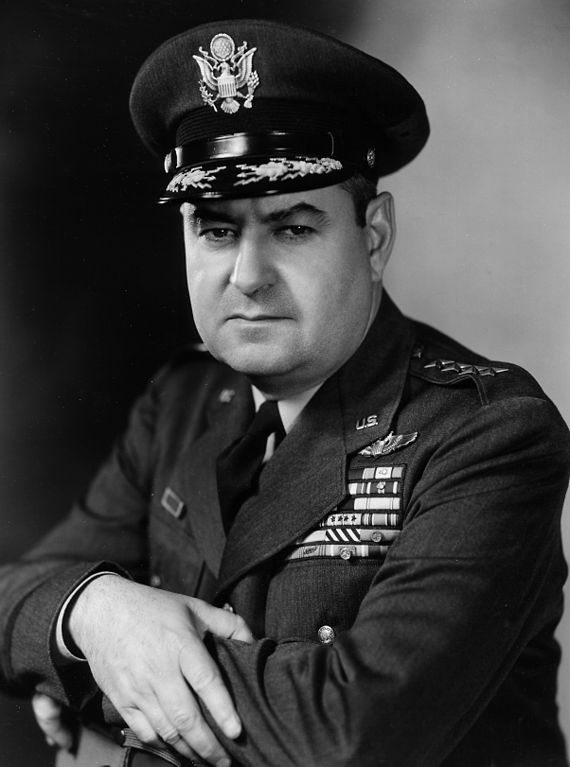
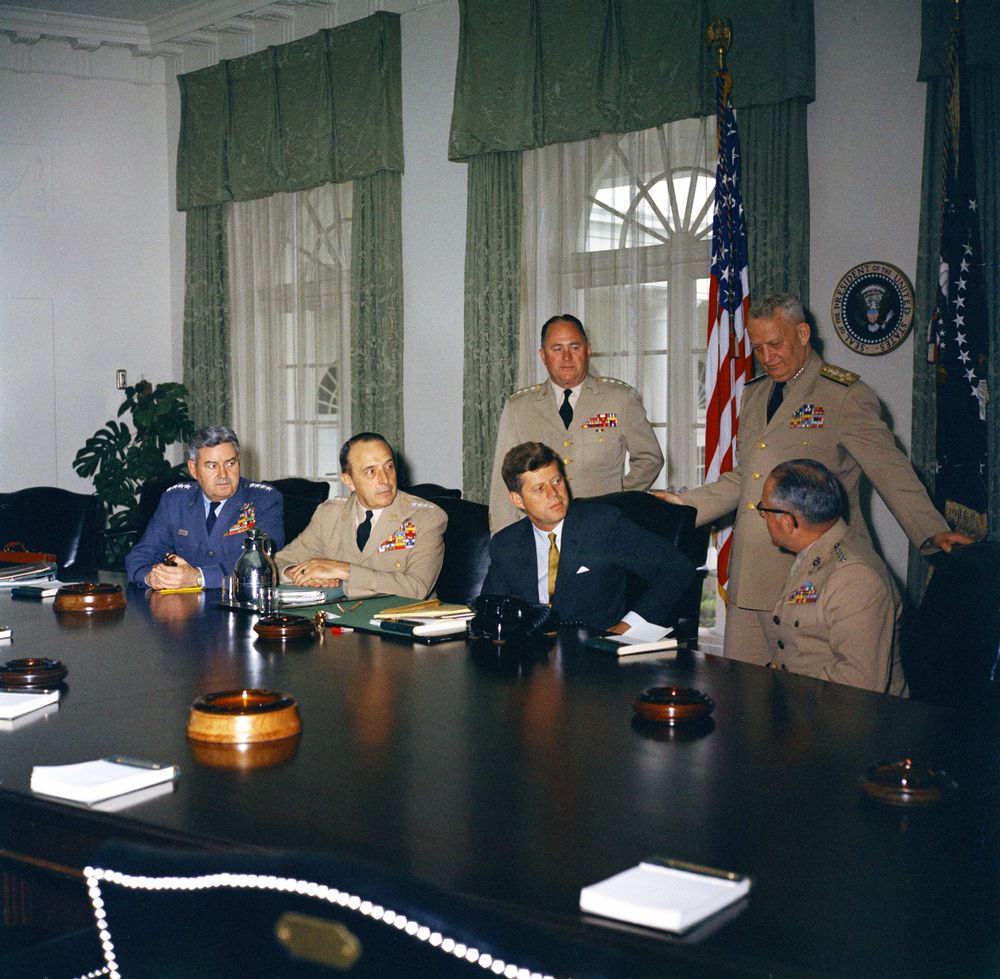
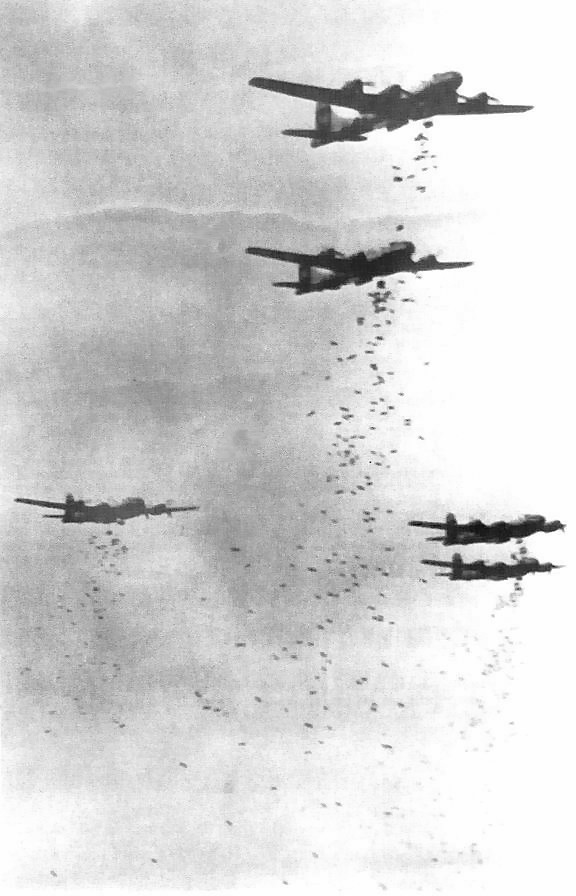
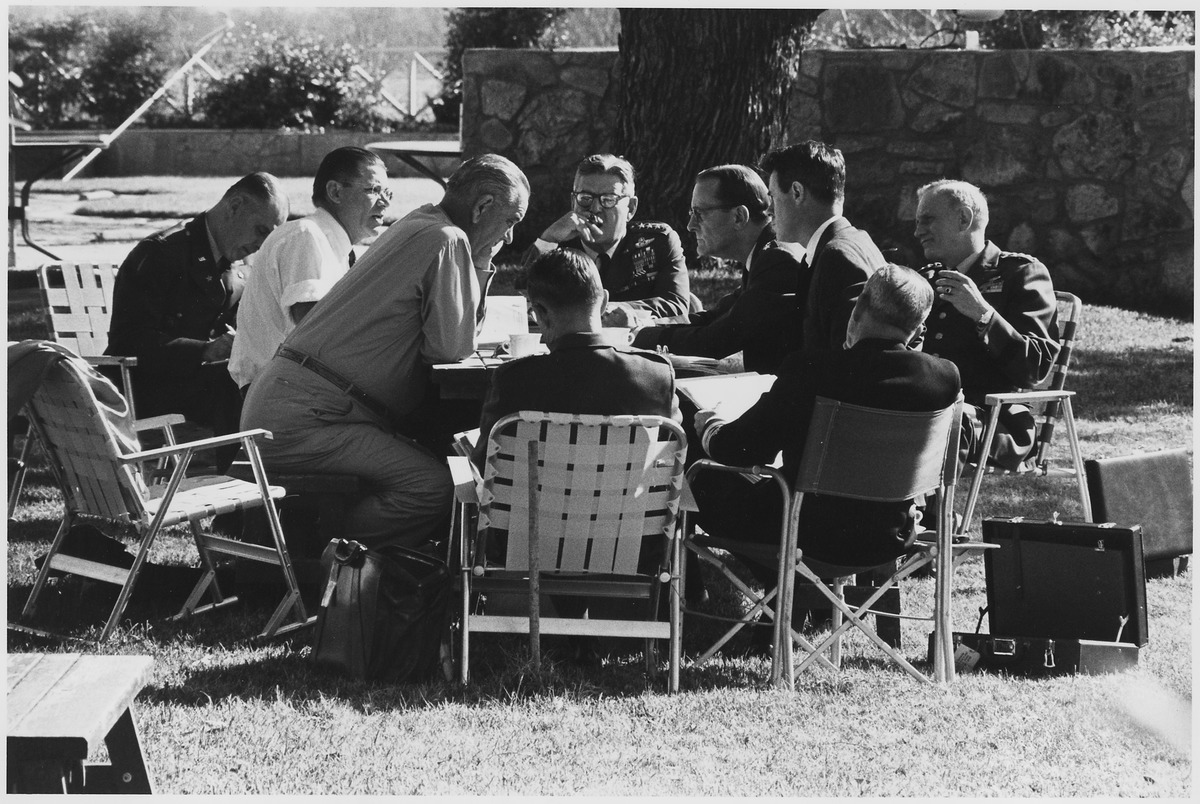

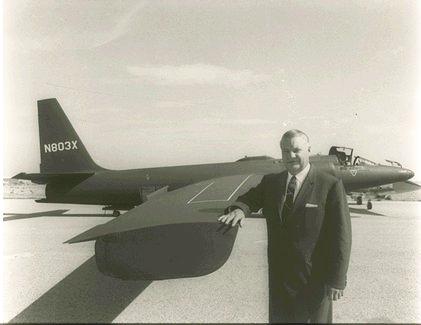
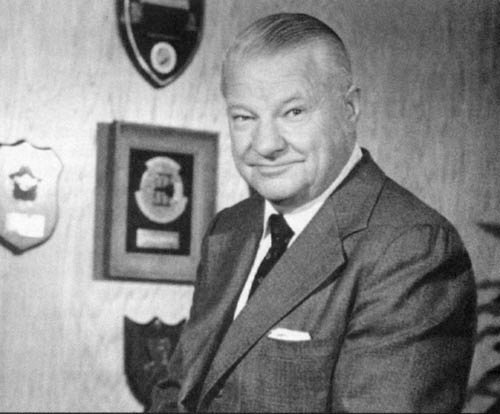
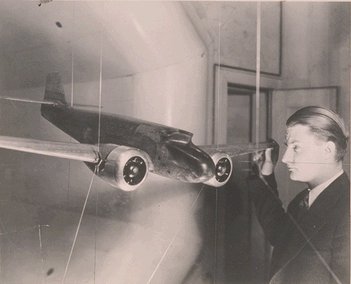
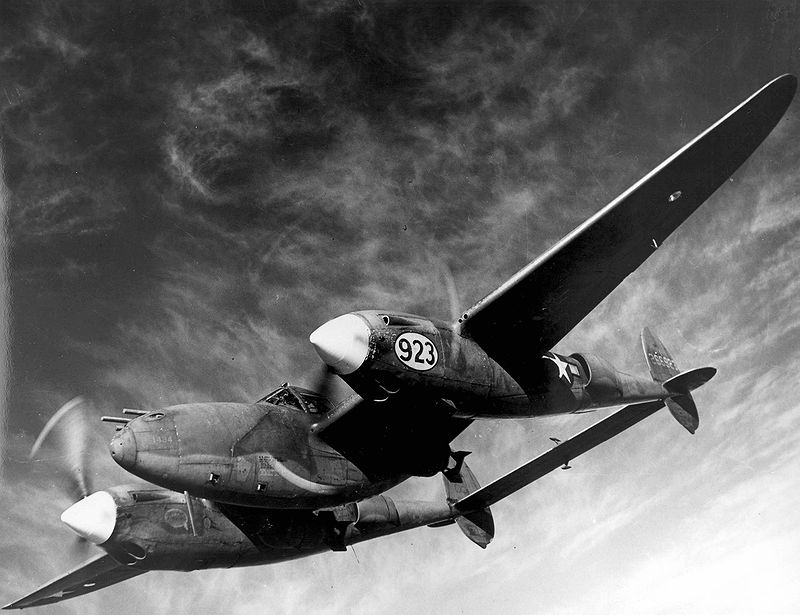
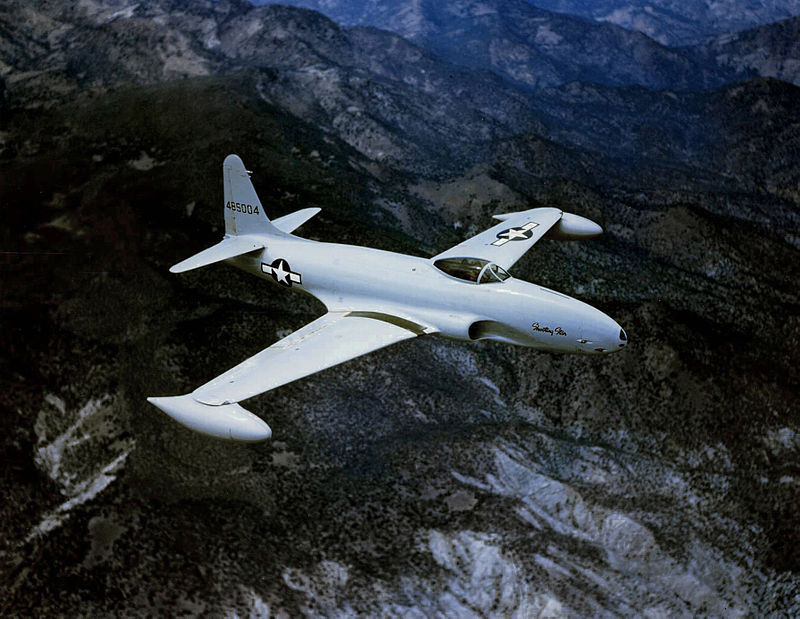
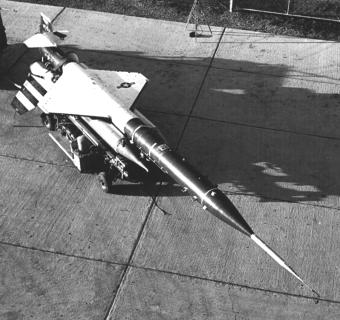
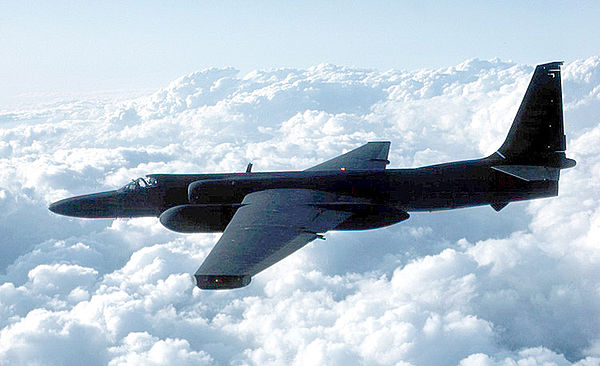
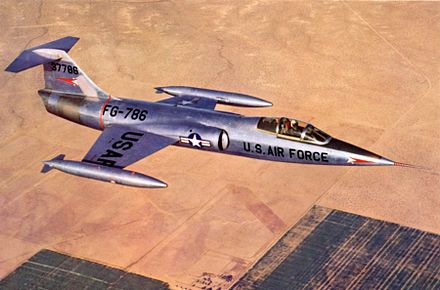
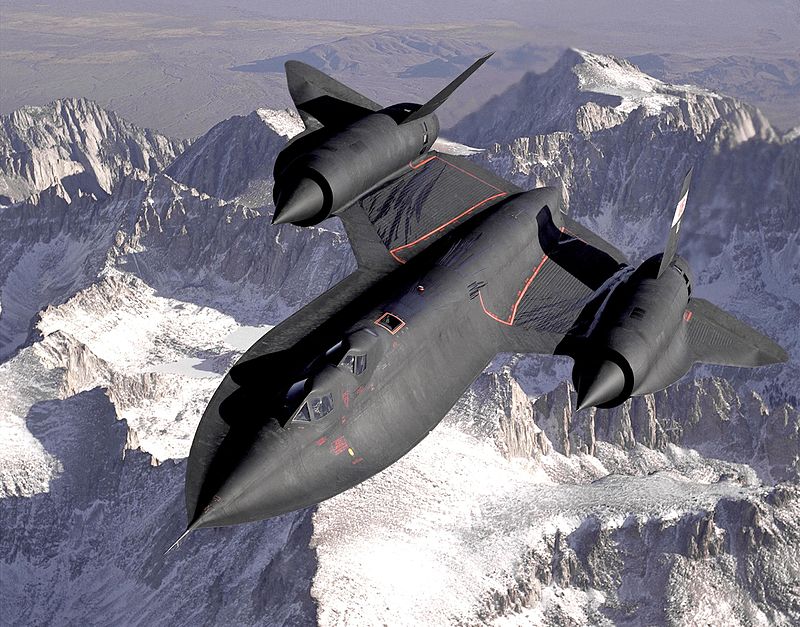
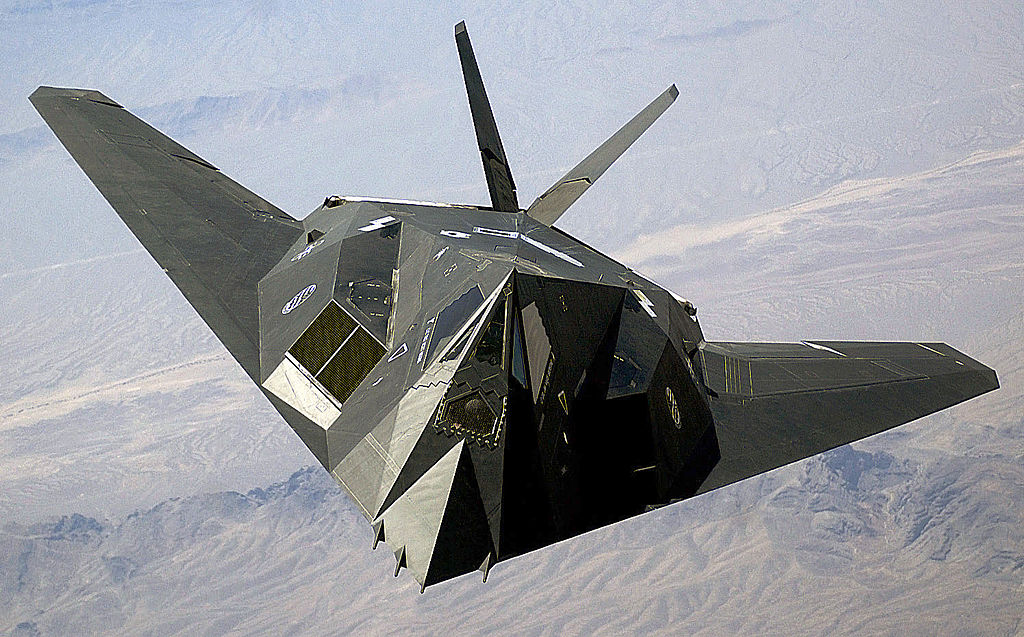
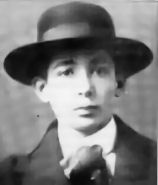
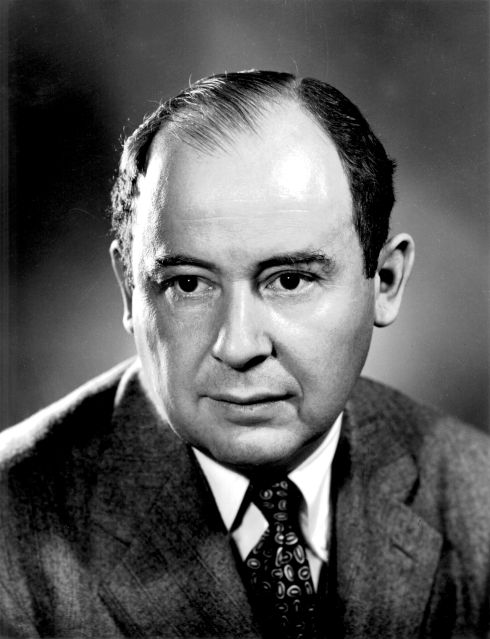
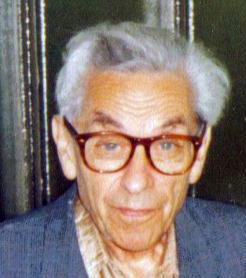
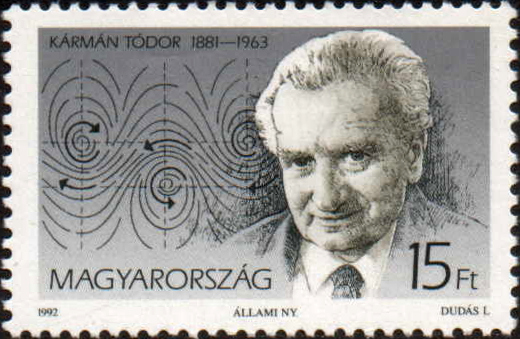
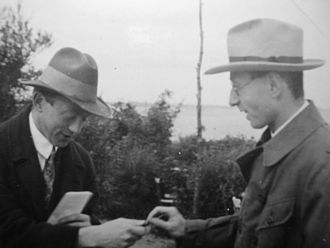

.jpg)
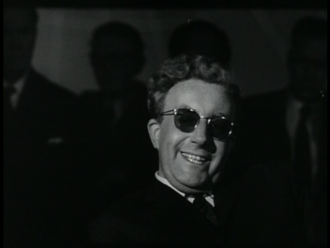
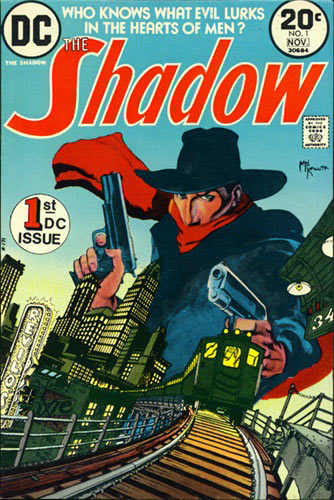
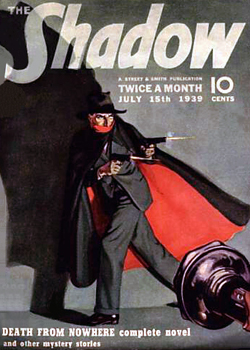

After the war, Szilard switched to biology. He invented the chemostat, discovered feedback inhibition, and was involved in the first cloning of a human cell. He publicly sounded the alarm against the development of the cobalt bomb, a new kind of nuclear weapon that might destroy all life on the planet. He helped found the Salk Institute for Biological Studies, where he became a resident fellow.
In 1960, Szilard was diagnosed with bladder cancer. He underwent cobalt therapy at New York's Memorial Sloan-Kettering Hospital using a cobalt 60 treatment regimen that he designed himself. He knew the properties of this isotope also from his estimates about the salted bombs with cobalt. A second round of treatment with an increased dose followed in 1962. The doctors tried to tell him that the increased radiation dose would kill him, but he said it wouldn't, and that anyway he would die without it. The higher dose did its job and his cancer never returned. This treatment became standard for many cancers and is still used.
1930- The Shadow 1938-1950 Golden Age of Comic Books 1939- Batman 1956-1970 Silver Age of Comic Books 1963 X-Men 1970-1985 Bronze Age of Comic Books 1985- Modern Age of Comic Books 1986 Watchmen
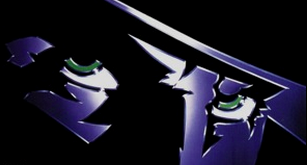 |
|---|
An wing generates lift at the cost of drag. Lift exceeds drag.
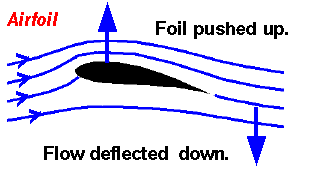 |
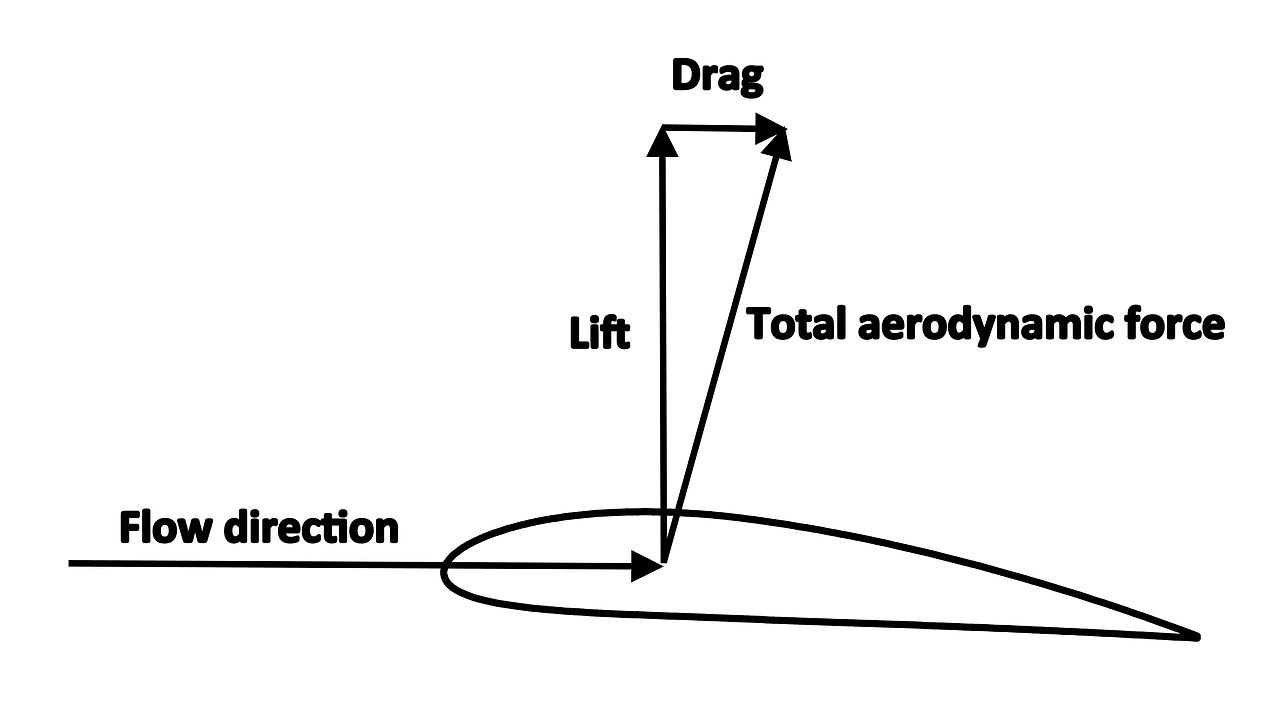 |
|---|---|
Wing drag force = F→ Wing lift force = F↑ Wing lift-to-drag coef.= Qw = F↑ / F→
The lift-to-drag coefficient Qw is proportional to wing length divided by wing width.
Wing length = L Wing width = W Wing lift-to-drag coef.= Qw ~ L/W = Wing aspect ratio.
Wing width varies along the length of the wing. We define an effective width as
Width = ½ Area / Length
"Area" is the total for both wings, and "Length" is for one wing.
Aspect ratio is Length/Width.
Qw Aspect Wing Wing Wing
ratio length width area
meter meter meter2
U-2 23 10.6 High-altitude spy plane
Albatros 20 1.7 Largest bird
Gossamer 20 10.4 14.6 1.4 41.3 Gossamer albatross, human-powered aircraft
Hang glider 15
Tern 12
Herring Gull 10
Airbus A380 7.5 7.5 36.3 11.6 845
Concorde 7.1 .7 11.4 15.7 358.2
Boeing 747 7 7.9 23.3 11.3 525
Cessna 150 7 2.6 4.5 1.7 15
Sparrow 4
Human wingsuit 2.5 1 1.0 1.0 2
Flying lemur ? Most capable gliding mammal. 2 kg max
Flying squirrel 2.0
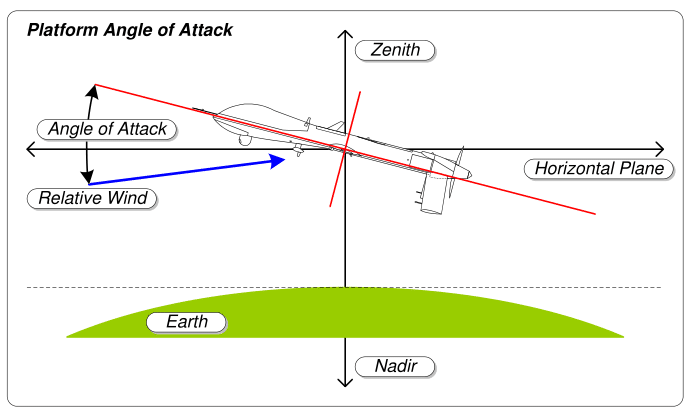 |
|
|---|---|
Changing wing angle changes lift and drag. There is an optimum angle that maximizes the lift-to-drag coefficient.
If the angle is larger than the optimal angle, you gain lift at the expense of drag. If you make the angle of attack too large, lift ceases and the plane stalls.
The air drag force is
Air density = D = 1.22 kg/meter2 Velocity = V Cross-sectional area = A Drag coefficient = C Drag force = F = ½ C D A V2
Human mass = M = 80 kg Gravity = g = 10 meter/second2 Gravity force = F↓ = 800 Newton Chute drag coefficient = C = 1 Dimensionless Air density = D =1.22 kg/meter2 Parachute area = A = 100 meter2 Drag force = F↑ = ½ C D A V2 = F↓ Terminal velocity = V = 3.6 meter/second
Drag force = F = ½ C D A V2 Drag power = P = F V = ½ C D A V3
Drag coef Drag area Power Max speed
dimensionless meter2 Watt meter/second
Bike 1 .5 400 11
Car .4 3 300000 74
Cw
F-4 Phantom .021 (subsonic)
Cessna 310 .027
Airbus A380 .027
Boeing 747 .031
F-4 Phantom .044 (supersonic)
 |
|---|
A glider is unpowered. The more efficient the glider, the smaller the glide angle. The minimum glide angle is determined by the wing lift/drag coefficient.
Drag force = F→ Lift force = F↑ = Fgrav Wing lift/drag ratio = Qw = F↑ / F→ Horizontal speed = V→ Vertical descent speed = V↓ Glide ratio = G = V→ / V↑ Gravitational force = Fgrav Drag power = Pdrag = F→ V→ Power from gravity = Pgrav = Fgrav V↓If the glider descends at constant velocity,
Pdrag = PgravThe goal of a glider is to maximize the glide ratio
V→ / V↓ = (Pdrag / F→) / (Pgrav / Fgrav)
= Fgrav / F→
= Qw
The glide ratio is equal to the lift coefficient. Qw = G
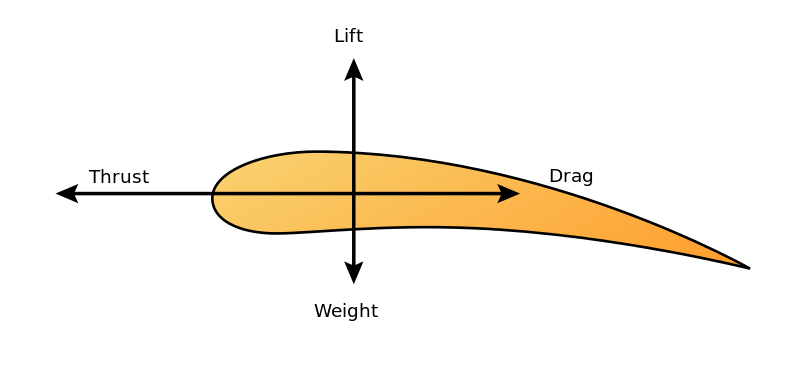 |
|---|
Air density = D Wing area = A Wing drag coefficient = Cw Wing drag = F→ = ½ Cw D A V2 Wing lift = F↑ Wing lift/drag ratio = Qw = F↑ / F→ Aircraft speed = V Aircraft mass = M Gravity = g = 9.8 meters/second2 Gravity force = Fgrav= M g Engine force = Feng = V F→ Drag power = P→ = F→ V = ½ Cw D A V3 Agility (Power/mass) = p = P→ / M = V g / QwFor flight at constant velocity,
Feng = F→ Horizontal force balance F↑ = Fgrav Vertical force balance F↑ = F→ Qw Definition of the wing lift/drag coefficient Fgrav= Fdrag Qw → M g = Qw ½ Cw D A V2 Cruising speed = V = M½ g½ Qw-½ (½ Cw D A)-½ ~ M1/6 Agility (Power/mass) = p = M½ g3/2 Qw-3/2 (½ Cw D A)-½ ~ M1/6 Aircraft energy/mass = e ~ M0 Flight time = T = e/p ~ M-1/6 Range = X = V T ~ M0
For the mass scalings, we assume that wing area scales as M2/3.
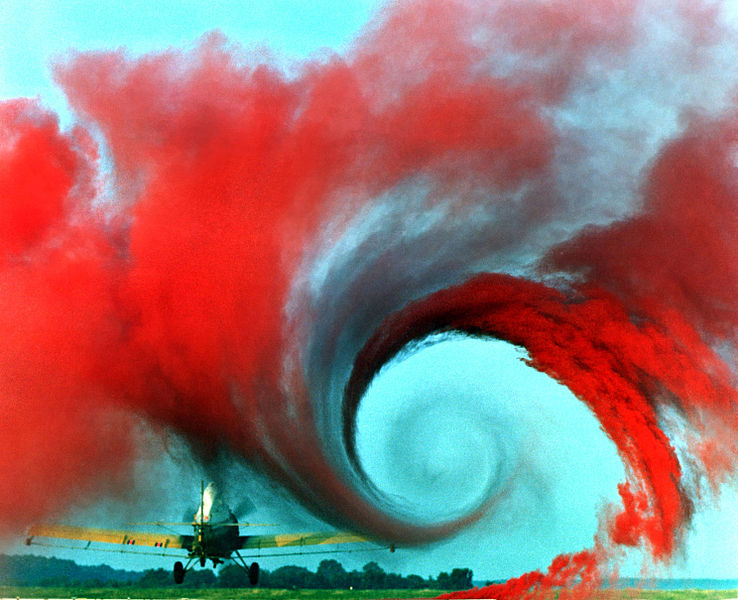 |
|---|
A wingtip creates a vortex as it moves. Wingtips are often equipped with a vertical element to damp the vortex. The vertical element increases the effective wing length and improves the lift-to-drag coefficient. coefficient.
Birds fly in a "V" formation to use the updraft from their neighbor's wingtip vortices.
An aircraft moving at Mach 2 and turning with a radius of 1.2 km has a g force of
7 g's.
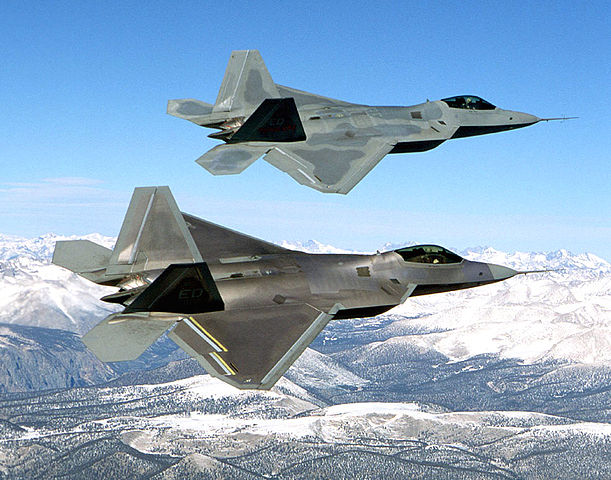
.jpg)
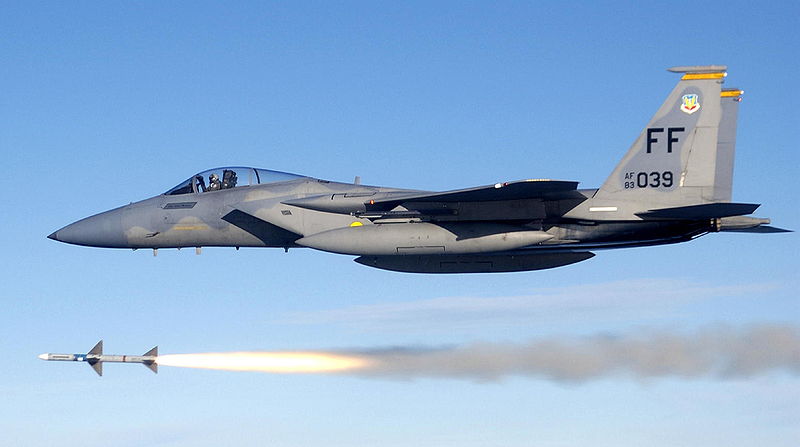
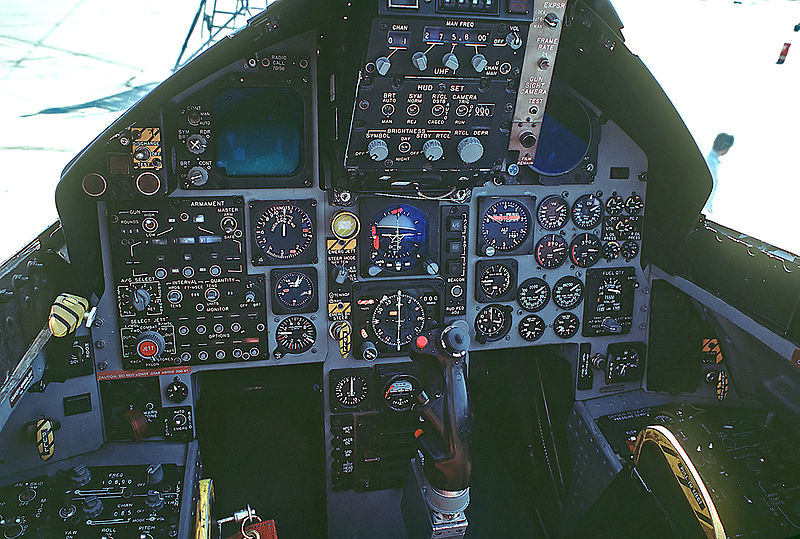
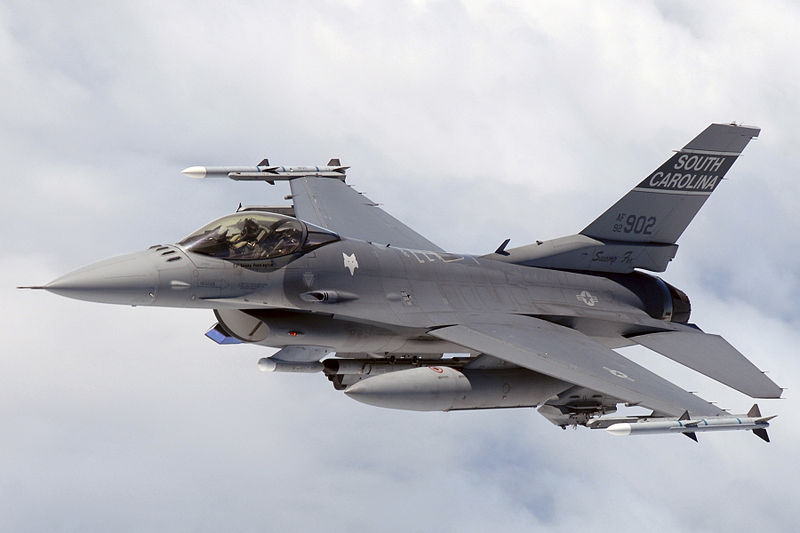
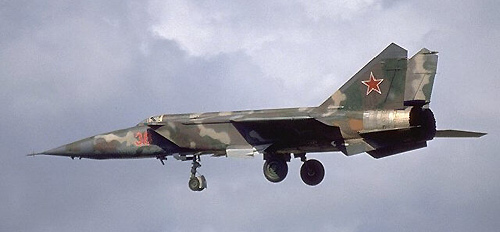
Speed Mass Takeoff Ceiling Thrust Range Cost Number Year Stealth
Mach ton ton km kN km M$
SR-71 Blackbird 3.3 30.6 78.0 25.9 302 5400 32 1966
MiG-25 Foxbat 2.83 20.0 36.7 20.7 200.2 1730 1186 1970
MiG-31 Foxhound 2.83 21.8 46.2 20.6 304 1450 519 1981
F-22A Raptor 2.51 19.7 38.0 19.8 312 2960 150 195 2005 *
F-15 Eagle 2.5 12.7 30.8 20.0 211.4 4000 28 192 1976
F-14 Tomcat 2.34 19.8 33.7 15.2 268 2960 712 1974
MiG-29 Fulcrum 2.25 11.0 20.0 18.0 162.8 1430 29 1600 1982
Su-35 2.25 18.4 34.5 18.0 284 3600 40 48 1988
F-4 Phantom II 2.23 13.8 28.0 18.3 1500 5195 1958
Chengdu J-10 2.2 9.8 19.3 18.0 130 1850 28 400 2005
F-16 Falcon 2.0 8.6 19.2 15.2 127 1200 15 957 1978
Chengdu J-7 2.0 5.3 9.1 17.5 64.7 850 2400 1966
Dassault Rafale 1.8 10.3 24.5 15.2 151.2 3700 79 152 2001
Euro Typhoon 1.75 11.0 23.5 19.8 180 2900 90 478 2003
F-35A Lightning 1.61 13.2 31.8 15.2 191 2220 85 77 2006 *
B-52 .99 83.2 220 15.0 608 14080 84 744 1952
B-2 Bomber .95 71.7 170.6 15.2 308 11100 740 21 1997 *
A-10C Warthog .83 11.3 23.0 13.7 80.6 1200 19 291 1972
Drone RQ-180 ~15 18.3 ~2200 2015 *
Drone X-47B .95 6.4 20.2 12.2 3890 2 2011 * Carrier
Drone Avenger .70 8.3 15.2 17.8 2900 12 3 2009 *
Drone RQ-4 .60 6.8 14.6 18.3 34 22800 131 42 1998
Drone Reaper .34 2.2 4.8 15.2 5.0 1852 17 163 2007
Drone RQ-170 15 20 2007 *
India HAL AMCA 2.5 14.0 36.0 18.0 250 2800 ? 0 2023 *
India HAL FGFA 2.3 18.0 35.0 20.0 352 3500 ? 0 >2020 *
Mitsubishi F-3 2.25 9.7 ? ? 98.1 3200 ? 1 2024 *
Chengdu J-20 2.0 19.4 36.3 ? 359.8 ? 110 4 2018 *
Sukhoi PAK FA 2.0 18.0 35.0 20.0 334 3500 50 6 2018 *
Shenyang J-31 1.8 17.6 25.0 ? 200 4000 ? 0 2018 *
Mach 1 = 295 m/s
5th generation fighters: F-22, F-35, X-2, HAL AMCA, J-20, J-31, Sukhoi PAK FA
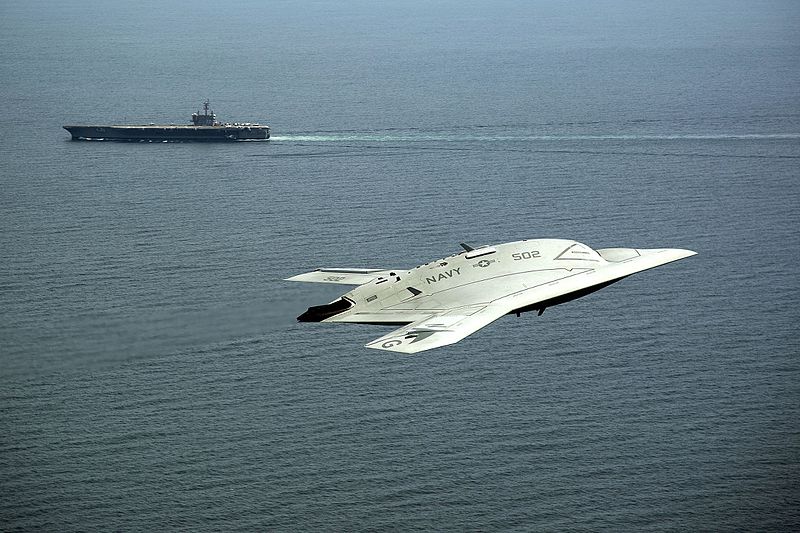

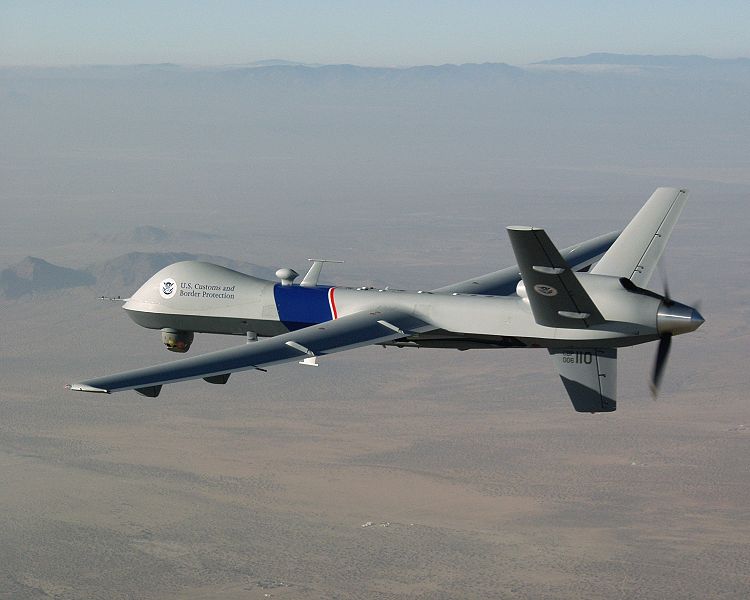
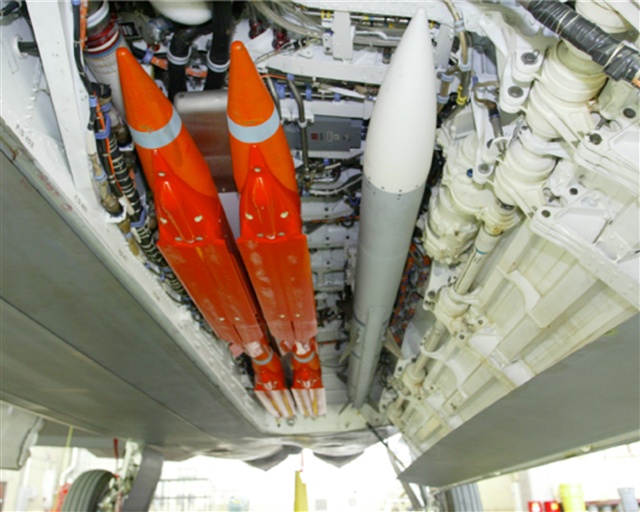
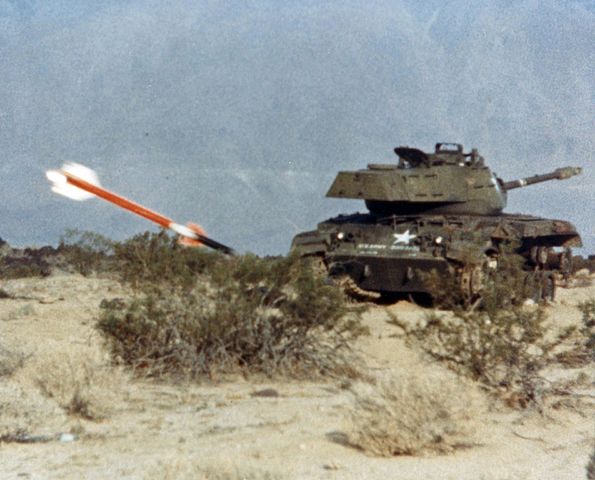
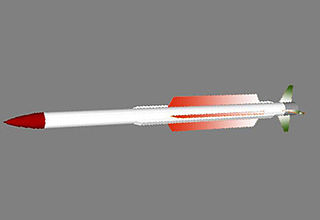

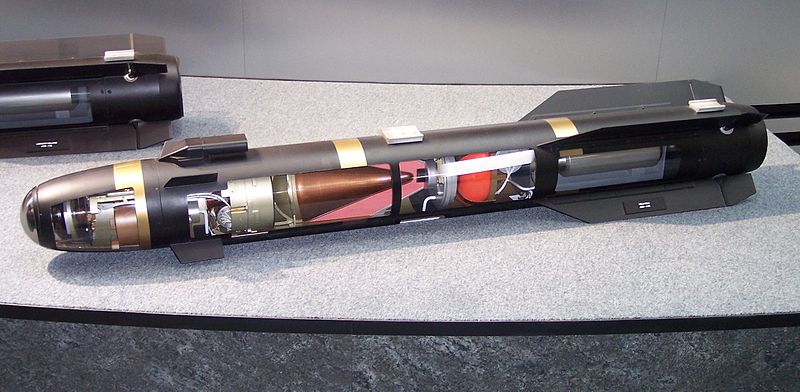
Mach Range Missile Warhead Year Engine
km kg kg
Russia R-37 6 400 600 60 1989 Solid rocket
Japan AAM-4 5 100 224 ? 1999 Ramjet
India Astra 4.5+ 110 154 15 2010 Solid rocket
EU Meteor 4+ 200 185 ? 2012 Ramjet
Russia R-77-PD 4 200 175 22.5 1994 Ramjet
USA AIM-120D 4 180 152 18 2008 Solid rocket
Israel Derby-IR 4 100 118 23 Solid rocket
Israel Rafael 4 50 118 23 1990 Solid rocket
France MICA 4 50 112 12 1996 Solid rocket
Israel Python 5 4 20 105 11 Solid rocket
Russia K-100 3.3 400 748 50 2010 Solid rocket
UK ASRAAM 3+ 50 88 10 1998 Solid rocket
Germany IRIS-T 3 25 87.4 2005 Solid rocket
USA AIM-9X 2.5+ 35 86 9 2003 Solid rocket
USA Hellfire 1.3 8 49 9 1984 Solid rocket AGM-114

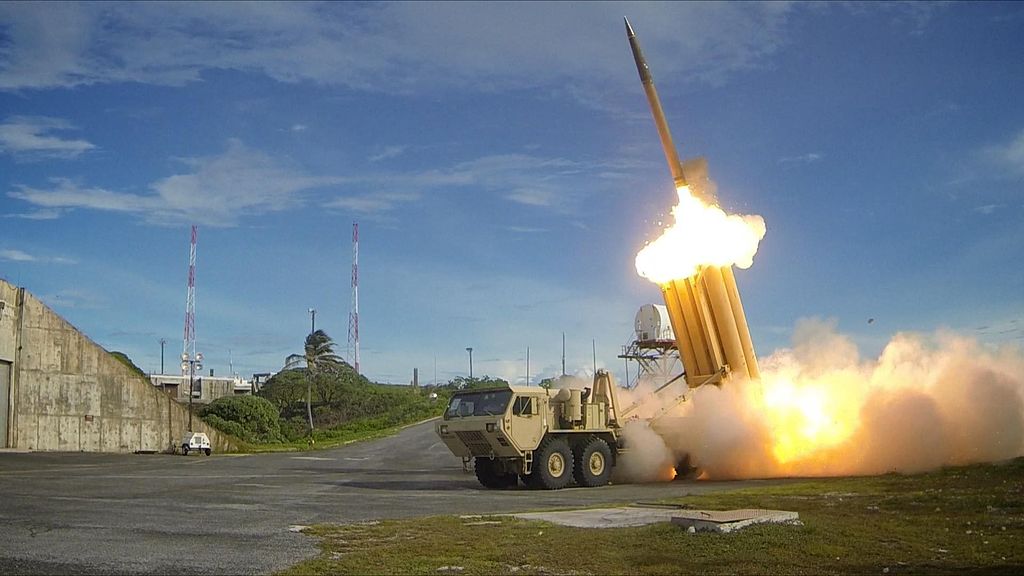
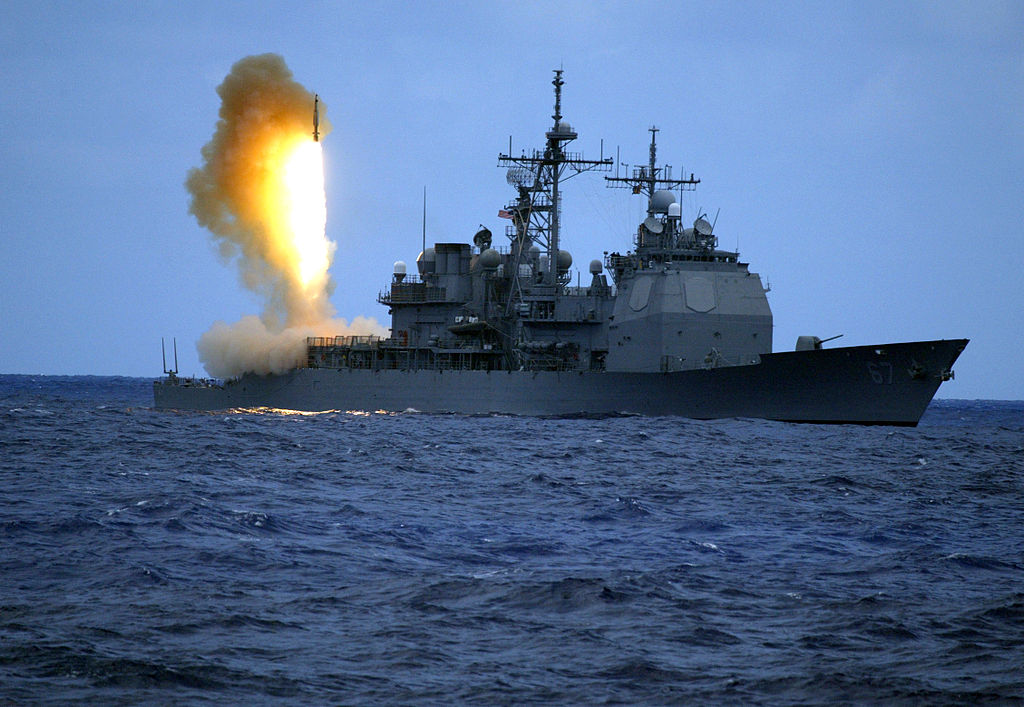
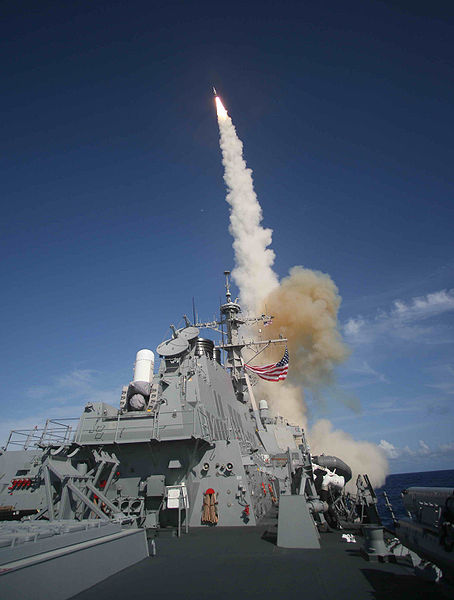
_02.jpg)
Mach Range Missile Warhead Year Engine Stages Anti
km kg kg missile
USA SM-3 15.2 2500 1500 0 2009 Solid rocket 4 *
Israel Arrow 9 150 1300 150 2000 Solid rocket 2
USA THAAD 8.24 200 900 0 2008 Solid rocket *
USA David 7.5 300 2016 Solid rocket *
Russia S-400 6.8 400 1835 180 2007 Solid rocket *
India Prithvi 5 2000 5600 2006 Solid, liquid 2 *
India AAD Ashwin 4.5 200 1200 0 2007 Solid rocket 1
Taiwan Sky Bow 2 4.5 150 1135 90 1998 Solid rocket
China HQ-9 4.2 200 1300 180 1997 Solid rocket 2
USA Patriot 3 4.1 35 700 90 2000 Solid rocket *
China KS-1 4.1 50 900 100 2006 Solid rocket *
USA RIM-174 3.5 460 1500 64 2013 Solid rocket 2
India Barak 8 2 100 275 60 1015 Solid rocket 2
Japan Chu-SAM 570 73 2003 Solid rocket
Korea KM-SAM 40 400 2015 Solid rocket
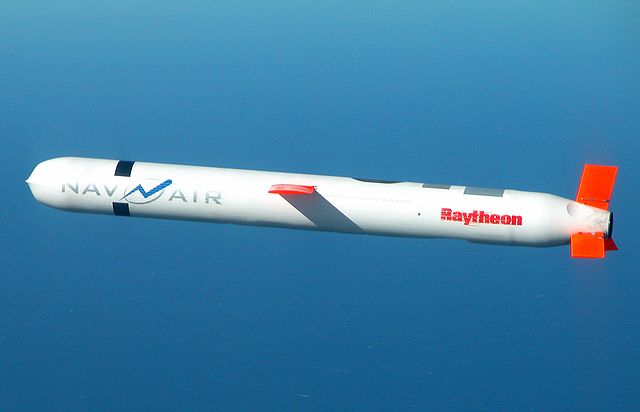
Mach Range Missile Warhead Year Engine Launch
km kg kg platform
USA Tomahawk .84 2500 1600 450 1983 Turbofan Ground
USA AGM-129 .75 3700 1300 130 1990 Turbofan B-52 Bomber
USA AGM-86 .73 2400 1430 1361 1980 Turbofan B-52 Bomber
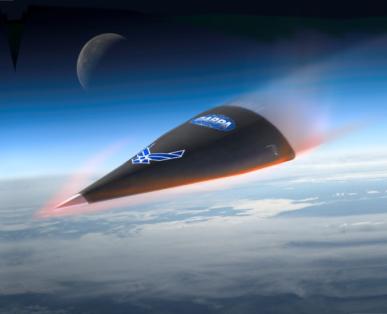
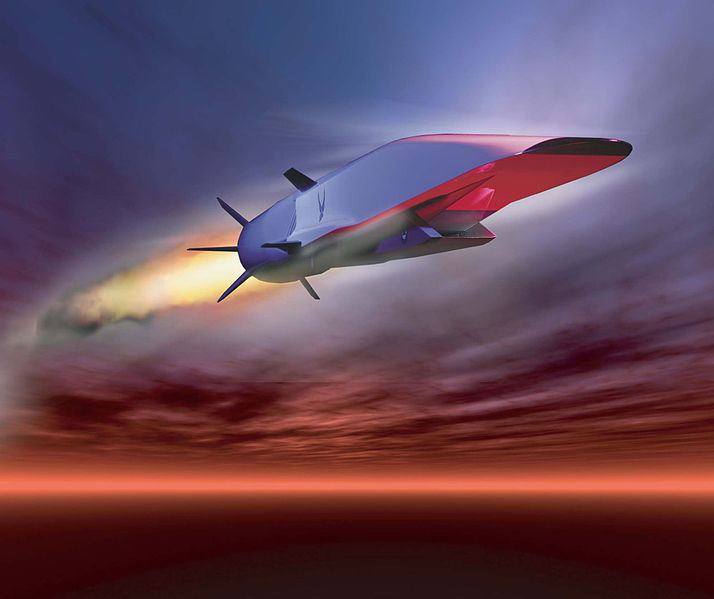
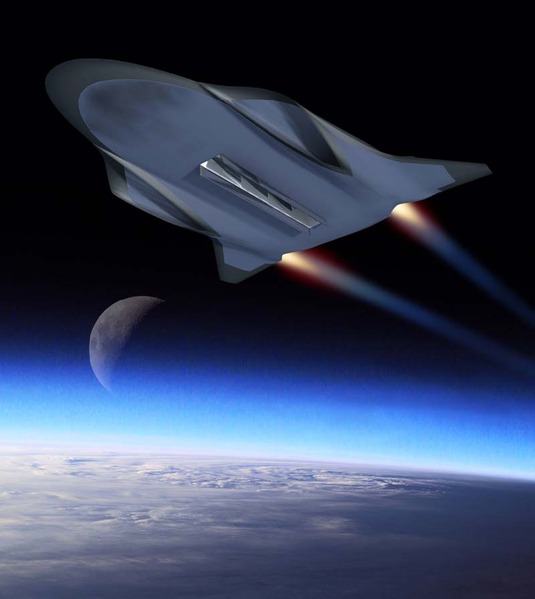
Speed Mass Range Year
mach tons km
USA SR-72 6 Future. Successor to the SR-71 Blackbird
USA HSSW 6 900 Future. High Speed Strike Weaspon
USA HTV-2 20 17000 2 Test flights
USA X-41 8 Future
USA X-51 5.1 1.8 740 2013 Tested. 21 km altitude. Will become the HSSW
Russia Object 4202 10 Tested
India HSTDV 12 Future
China Wu-14 10 2014 7 tests. also called the DZ-ZF
The SR-72 has two engines: a ramjet for below Mach 3 and a ramjet/scramjet for above
Mach 3. The engines share an intake and thrust nozzle.
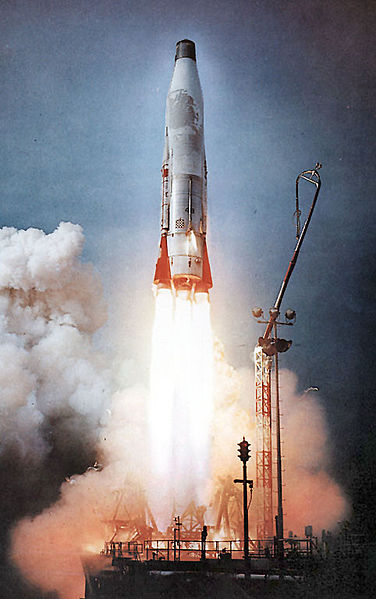
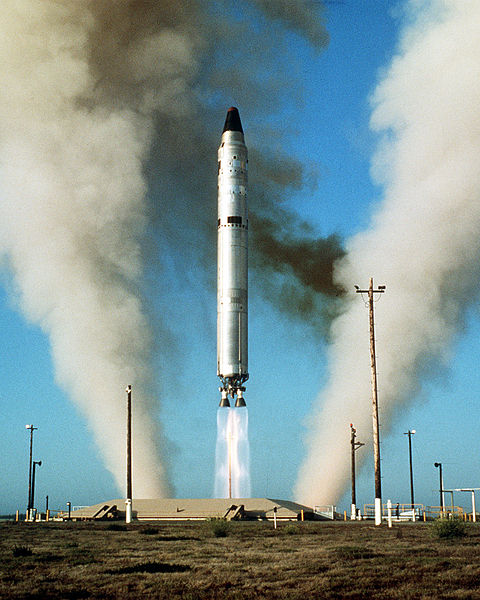
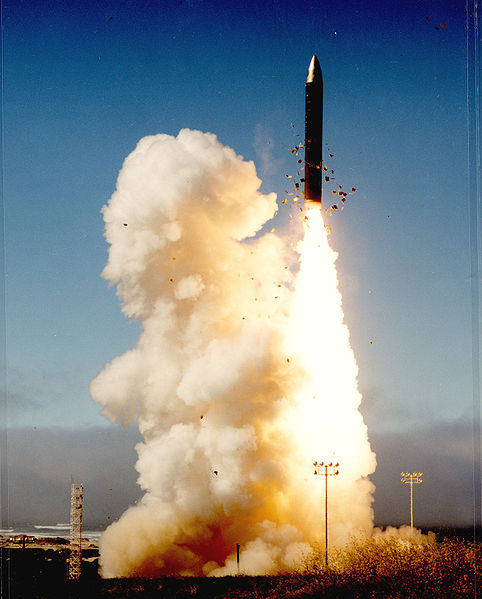

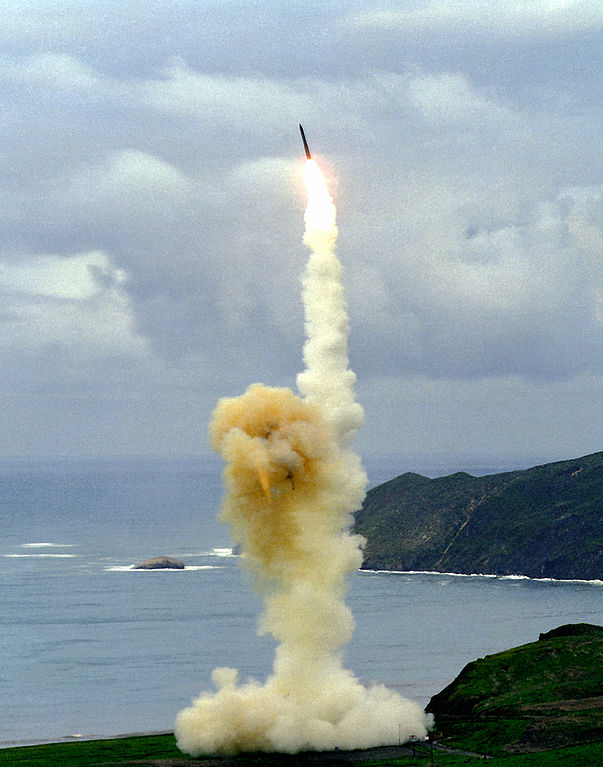
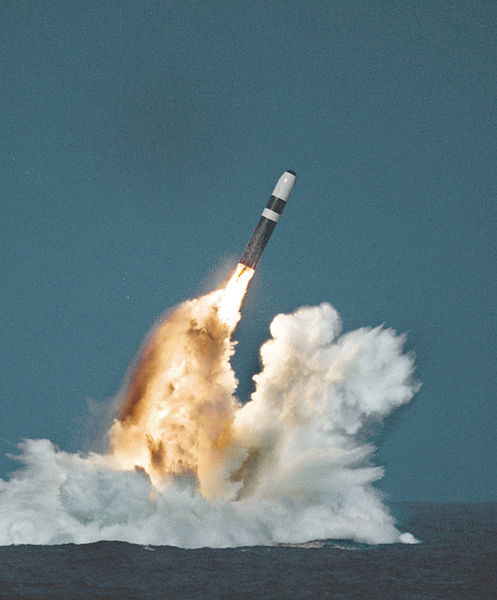
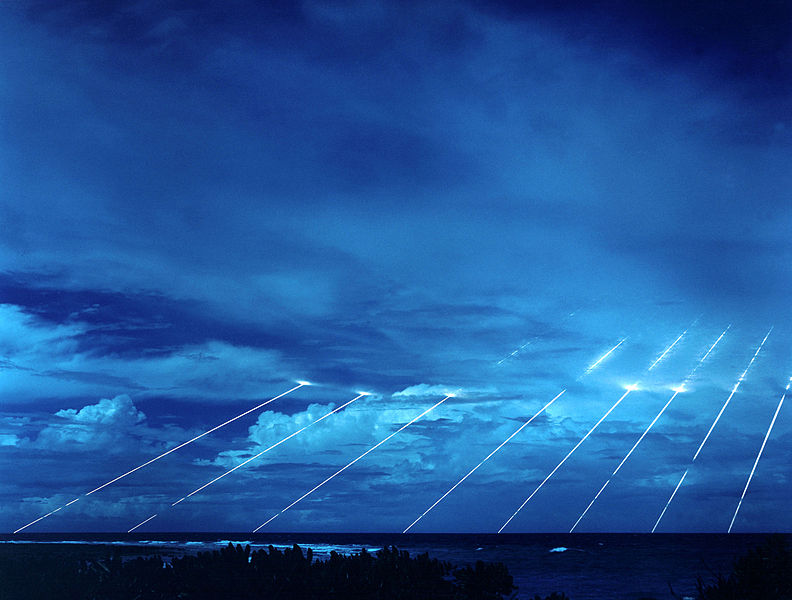
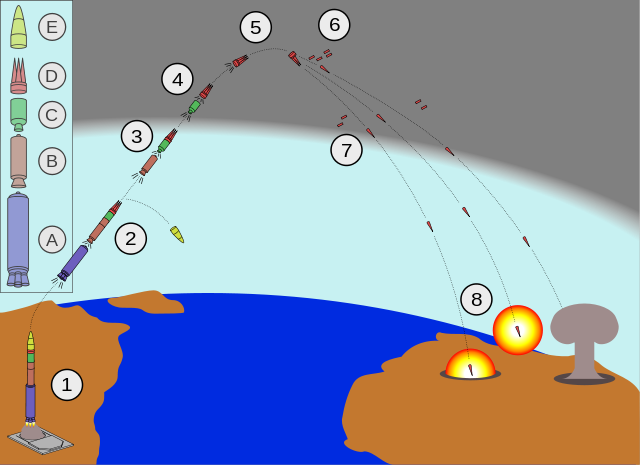
Payload Paylod Range Mass Launch Year
(tons) (Mtons) (km) (tons)
USA Titan 2 9 15000 154 Silo 1962 Inactive
USA Minuteman 3 .9 13000 35.3 Silo 1970
USA Trident 2 .95 11300 58.5 Sub 1987
USA Titan 3.75 10200 151.1 Silo 1959 Inactive
USA Peacekeeper 3 9600 96.8 Silo 1983 Inactive
Russia RS-24 1.2 12000 49 Road 2007
Russia Voevoda 8.7 8 11000 211.4 Silo 1986
Russia Layner 11000 40 Sub 2011
Russia RS-28 Sarmat 10 10000 >100 Silo 2020 Liquid rocket
Russia Bulava .9 10000 36.8 Sub 2005
France M51.1 1 10000 52 Sub 2006
China DF-5B 8 15000 183 Silo 2015
China DF-5A 4 15000 183 Silo 1983
China JL-2 6 12000 42 Sub 2001
China DF-5 5 12000 183 Silo 1971
China DF-31A 3 12000 42 Road
China DF-31 1 8000 42 Road 1999
China DF-4 3.3 7000 82 Silo 1974
India Surya 15 16000 70 Road 2022
India Agni-VI 10 12000 70 Road 2017
India Agni-V 6 8000 50 Road 2012
India K-4 2.5 3500 17 Sub 2016 Solid. Arihant nuclear sub
India K-15 ~6.5 750 1.0 Sub 2010 Solid. 2 stages. Arihant nuclear sub
Israel Jericho 3 .75 11500 30 Road 2008
N. Kor. Taepodong-2 6000 79.2 Pad 2006
Pakis. Shaheen 3 2750 Road 2015 Solid. 2 stages.
Pakis. Shaheen 2 2000 25 Road 2014 Solid. 2 stages.
Pakis. Ghauri 2 1.2 1800 17.8 Road
Pakis. Ghauri 1 .7 1500 15.8 Road 2003 Liquid. 1 stage.
Iran Shabab 3 1.0 1930 2003
Payload in "tons" represents the mass of the payload.
Payload in "Mtons" is the nuclear detonation payload in terms of tons of TNT.

© Jason Maron, all rights reserved.
Data from Wikipedia unless otherwise specified.